
How to Speak Money: What the Money People Say--And What It Really Means
by
John Lanchester
Published 5 Oct 2014
He was the dominant intellectual influence on Warren Buffett, who studied under him at Columbia University and then went to work for him. Greater Fool theory A manifestly daft idea that occasionally lets some people make money before then costing a lot more people a lot more money. It is the opposite of investing in fundamentals. In Greater Fool theory, an investor buys something—shares, a house—knowing that the price is unjustifiably high, but not caring, because he is sure that the price of the thing is going up. He lets it go up for a bit, then sells it to the next idiot: the Greater Fool. The idea is that it doesn’t matter what the underlying realities are, just as long as there’s a Greater Fool down the line. This is a reckless strategy, for the obvious reason that at some point the price is going to stop going up; but it is very difficult thing to resist the momentum of a rising market, especially when everyone around you is coining it.
…
Isaac Newton, who has a claim to be the most intelligent person ever to have lived, and who knew a lot about the operation of money thanks to his day job as master of the King’s Mint, himself fell victim to the Greater Fool theory. When the South Sea bubble came along, Newton could see it was based on nothing and was certain to collapse; it was certain to collapse; it was certain to . . . oh, the hell with it, since everyone else was making to much money, he piled in too. Then the bubble collapsed, and he lost all his money. The moral of the story is (a) that it’s hard even for very bright people to hold their nerve during a bubble and (b) that the temptations of Greater Fool theory are strong, and should be resisted. Grexit The hypothetical exit of Greece from the euro zone.
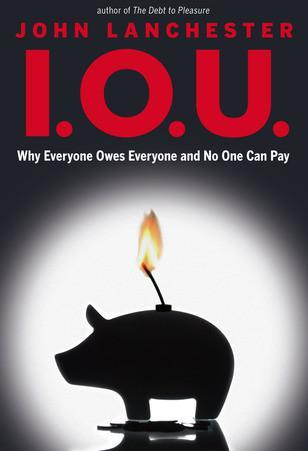
I.O.U.: Why Everyone Owes Everyone and No One Can Pay
by
John Lanchester
Published 14 Dec 2009
The basic pattern of these manias is that a real phenomenon comes along (overseas exploration, railways, the Internet), is latched onto by investors, is blown out of all proportion, and continues surging upward anyway, so more investors pile in on the basis of what’s now called “greater fool theory.” I vividly remember the first time I heard this term, on the lips of one of the cleverest people I’ve ever met, explaining why he had invested heavily in what were obviously hugely overvalued technology stocks. He told me what he’d done, I said I thought he was nuts, and then he explained the “greater fool theory.” What it means is that even though everyone knows that what’s happening is crazy, there’s still money to be made by buying stocks and selling them a little while later to the eponymous “greater fool.” So it doesn’t matter how overvalued the stocks are, as long as there is a bigger idiot out there willing to buy them from you, you’ve made a nice profit.
…
If you plug assumptions of economic rationality into your view of the world, you can come up with all sorts of fascinating explanations of everything from why there are so many teenage single mothers (they were making a rational choice to marry the state), why the bankers got everything so wrong in the run-up to the credit crunch (they were responding rationally to a skewed balance of risks and rewards), and why the Dutch tulip bubble took place (it was a rational application of greater fool theory). Most of this exemplifies what I would argue is the most common mistake of very smart people: the assumption that other people’s minds work in the same way that theirs do. To noneconomists, the mathematically based models and assumptions of rational conduct which permeate the field often have the appearance, at best, of toys, entertaining but by definition of limited utility; at worst, they can seem willful delusions, determinedly ignoring reality.
…
Germain Depository Institutions Act, 185 Gaussian copula function, 116–17, 157–60, 163 Geithner, Timothy, 188 Germany, 58, 222, 229 banks of, 36, 77, 83, 227 housing in, 40, 91–92, 94 Nazis and, 138–39, 180 Glass-Steagall Act, 64–65, 187–88, 199–200 Goldilocks economy, 107, 174 Goldman Sachs, 40, 77–78, 163, 190, 225 profitability of, 78, 227–28 Goodwin, Sir Fred, 76–77, 204, 206 government, see politics, politicians Great Depression, 21, 65, 99, 170, 186–87, 199–200 greater fool theory, 104 Great Moderation, 107, 174 Greenspan, Alan: derivatives and, 166, 183–84 house prices and, 165, 173–74, 176 interest rates and, 107–8, 165, 173–77 regulation and, 184, 188–89 risk and, 142–43, 164–66, 174, 184 Greenspan put, 174 gross domestic product (GDP), 80–81 of Earth, 2–4, 80 free-market capitalism and, 14–15 of U.K., 32, 214, 220 Haarde, Geir, 12 Haji-Ioannou, Stelios, 227 Haldane, Andrew, 36–37 Halifax, 38, 89 Hamanaka, Yasuo, 51 Harlot’s Ghost (Mailer), 172 health care, 13, 17, 198, 217, 222, 226–27 hedges, hedge funds, 164–66, 171 definition of, 54n–55n LTCM and, 54–56, 80, 142, 162, 164–65, 230–31 risk and, 49–50, 52, 58, 115, 155, 205 hedonic treadmill, 218 heuristics, 137–38 hindsight bias, 137 Hollinger, 59 Home Owners’ Loan Corporation, 99 Hong Kong, 7–8, 13–14 Hongkong and Shanghai Bank, 7, 53 Hoover, Herbert, 98–99 houses, housing, home ownership, 27–29, 40, 82–102, 109–32, 149, 157–60, 163–66, 187 balance sheets and, 27–28, 38 bubbles in, 5, 86–87, 89–90, 92, 101, 115, 159–60, 170, 173–74, 176–78, 216–17, 219, 223 foreclosures on, 83–85, 126–31 in Iceland, 10–11 inflation and, 88, 101, 179–80 in Ireland, 92, 110, 170–71 leverage and, 60–61, 83, 95, 97 liquidity and, 28–29, 90, 96–97 for low-income borrowers, 100, 113, 118, 121–23, 126–27, 130–31, 163 politics and, 87–89, 91, 96–101, 177–78 prices of, 5, 28–29, 37–38, 61, 71, 86–91, 101, 109–11, 113, 115, 125, 157, 160, 164–66, 173–76, 194, 208 and sense of dislocation, 95–97 in U.K., 38, 87–98, 110, 122, 177–78 in U.S., 37, 82–86, 95, 97–101, 109–10, 114–15, 122, 125–31, 157–58, 163 see also mortgages HSBC, HSBC Holding, 36, 53 Hume, David, 147 Hypo Real Estate, 40 IBM, 58, 65, 69 Iceland, Icelanders, 15 economic crisis in, 9–12, 23–24, 40, 170, 216, 223 pots and pans revolution in, 223 Iguchi, Toshihide, 51 illusion of validity, 140 incentives, 206–11, 224, 228 for bankers, 19, 37, 206–8 bond-rating agencies and, 209–11 incomes, 4, 13, 17, 66, 171, 203–4, 212, 221 balance sheets and, 26, 28, 30–31 banking and, 19–20, 37, 206–8, 218 housing and, 60, 90, 93–94, 100, 126, 130–32, 163 inflation and, 92, 179 India, 3–4 industrialization, 96–97 inequality, see equality, inequality inflation, 107, 144, 147, 220–21 asset price, 109–10 housing and, 88, 101, 179–80 incomes and, 92, 179 interest rates and, 102–3, 172–73, 178–80, 221 ING Group, 36 Innumeracy (Paulos), 8 insolvency, see solvency, insolvency interest, interest rates, 11, 24, 58–64 bonds and, 20, 61–63, 103, 107–10, 112, 144 and cost of money, 102–3 credit and, 172–73, 175, 209 derivatives and, 20, 47, 58, 63–64, 66, 69–70, 114, 121–22 government determination of, 102–3, 107–8, 172–80, 221 Greenspan and, 107–8, 165, 173–77 loans and, 59–60, 66, 74, 102, 108, 145, 172–73 mortgages and, 8, 58, 86, 89, 91–92, 95, 100, 102, 108, 110, 112–14, 122, 128, 145–46, 174, 176, 212 risk and, 69–71, 144–45, 165 International Monetary Fund (IMF), 15, 19, 186 International Swaps and Derivatives Association (ISDA), 79–80, 183 investing, investments, investors, 28, 58–63, 101–9, 171–72, 175–77, 181, 187, 213, 221 banks and, 25, 30, 43, 228 blue chip, 106 bonds and, 62–63, 102–3, 107–8, 111, 208–9 of China, 109, 176–77 derivatives and, 54–56, 58, 69–70, 73, 117, 120, 132, 153, 158, 172, 184 diversification of, 146–48 hedge funds and, 54n–55n housing and, 86–88, 97, 101 interest rates and, 102–3 regulation and, 225–26 risk and, 5, 68, 70, 88, 103, 144, 146–53, 158, 165, 184, 190 in stocks, 59, 73, 101–7, 111, 146–52, 158, 175, 192 values and, 60–61, 104, 198 investment trusts, 55n Ireland, 15, 169–71, 177 economic contraction in, 170–71, 222–23 housing in, 92, 110, 170–71 Jacobs, Jane, 82 Japan, Japanese, 18, 51–54, 77 banks of, 43, 51, 229 derivatives and, 51–52, 54 Johnson, Simon, 19–20, 185–86 Jorion, Philippe, 156–57, 162 J.P.
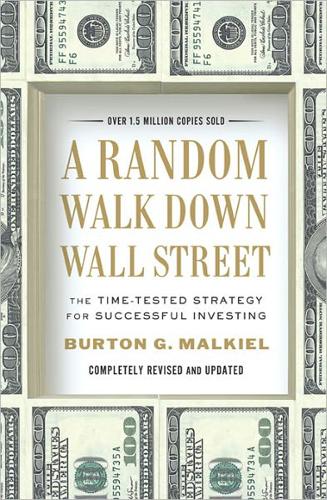
A Random Walk Down Wall Street: The Time-Tested Strategy for Successful Investing
by
Burton G. Malkiel
Published 10 Jan 2011
In this kind of world, a sucker is born every minute—and he exists to buy your investments at a higher price than you paid for them. Any price will do as long as others may be willing to pay more. There is no reason, only mass psychology. All the smart investor has to do is to beat the gun—get in at the very beginning. This theory might less charitably be called the “greater fool” theory. It’s perfectly all right to pay three times what something is worth as long as later on you can find some innocent to pay five times what it’s worth. The castle-in-the-air theory has many advocates, in both the financial and the academic communities. Robert Shiller, in his best-selling book Irrational Exuberance, argues that the mania in Internet and high-tech stocks during the late 1990s can be explained only in terms of mass psychology.
…
Not being greedy himself, the promoter promptly closed up shop and set off for the Continent. He was never heard from again. Not all investors in the bubble companies believed in the feasibility of the schemes to which they subscribed. People were “too sensible” for that. They did believe, however, in the “greater fool” theory—that prices would rise, that buyers would be found, and that they would make money. Thus, most investors considered their actions the height of rationality, expecting that they could sell their shares at a premium in the “after market,” that is, the trading market in the shares after their initial issue.
…
As the quote from Paul Samuelson indicates, the theory holds that, at any time, stocks sell at the best estimates of their intrinsic values. Thus, uninformed investors buying at the existing prices are really getting full value for their money, whatever securities they purchase. This line of reasoning is uncomfortably close to that of the “greater fool” theory. We have seen ample evidence in Part One that stocks sometimes do not sell on the basis of anyone’s estimate of value (as hard as this is to measure)—that purchasers are often swept up in waves of frenzy. It is true that the market pros were largely responsible for several twentieth-century speculative crazes, including the turn-of-the-century Internet bubble.
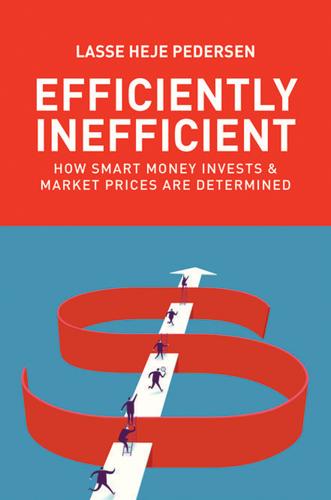
Efficiently Inefficient: How Smart Money Invests and Market Prices Are Determined
by
Lasse Heje Pedersen
Published 12 Apr 2015
Some investors claimed to pursue this strategy during the Internet bubble of the late 1990s, for instance.4 This form of trading activity contributes to price bubbles. It is based on the so-called “greater fool theory,” meaning that the investors may acknowledge that it is a foolish stock to buy, but this is fine as long you can sell at an even higher price to a greater fool. Of course, this activity cannot go on forever; bubbles eventually burst, and it is hard to predict when, so this is a risky strategy. A clearly illegal form of trading seeks to push others to become greater fools, namely “pump and dump” schemes, where a trader might buy a stock and create a hype around it to drive the price up.
…
See also bond returns; yield curve bonuses, performance-based, 21 book-to-market ratio (B/M), 29, 136, 137 book value of a stock, 92–93 boom/bust cycles: Soros on, 15, 15t, 200–204, 202f, 205–6, 207. See also bubbles break-even inflation trading, 262 break-even rates (forward rates), 247–48; bond carry as, 255n6 breakout, 48 broker/dealers, 25 BTOP 50, 221, 222t bubbles: greater fool theory and, 107, 120; mitigated by short-selling, 121; Paulson on subprime mortgage securities and, 321; riding rather than trading against, 41–42, 107; Soros and, 15, 41, 201–4, 202f, 205–6, 207. See also conglomerate boom of late 1960s; Internet bubble of late 1990s; subprime credit crisis Buffett, Warren: on arbitrage, 233; on diversification in arbitrage, 292; on holding periods, 105–6, 111; on intrinsic value, 87, 88, 89, 90; leverage used by, 105; leveraging safer securities, 6, 141; on merger arbitrage, 298–300, 304; Sharpe ratio achieved by, 104–5, 160; as value and quality investor, 9, 99, 104–5 busted convertible bonds, 282–83, 282f, 284, 285f butterfly trades, 241, 251–55, 252f, 253f, 254f buy in, 118 callable convertible bonds, 269, 272 call options: convertible bonds and, 13, 269, 272; defined, 235; Merton’s Rule and, 6, 7t.
…
.: Asness at, 158, 159, 161; Long-Term Capital Management and, 84; risk arbitrage at, 313–14 gold prices, 11–12, 48, 192, 200 Gordon’s growth model, 90–91, 100 government bonds: market for, 241; repo rate for, 245; short-selling, 260, 261; spread trades involving, 264; strategic asset allocation and, 168. See also bonds; Treasury bonds Graham and Dodd, 95, 96, 98, 139 greater fool theory, 107, 120 “greatest trade ever,” 2, 292, 313, 320–22 Great Recession. See global financial crisis of 2007–2009 Greenlight Capital, 122 Greenspan, Alan, 190–91, 203, 206 Griffin, Kenneth C., viii, 2, 15t, 16; interview with, 286–90 gross domestic product (GDP), 192–93; output gap and, 189 gross leverage, 74 growth: bad forms of, 101, 102; economic environment and, 191–92, 191t; factors affecting, 193; quality investing and, 100–102, 103–4; supply or demand shocks and, 195t; trading on direction of interest rates and, 250 growth at a reasonable price (GARP) investing, 104 growth banks, 205 growth investors, 103–4, 103f growth stocks, 100–101, 104 Gruss Partners, 313 GTAA (global tactical asset allocation), 176, 185 haircut, 77, 80.
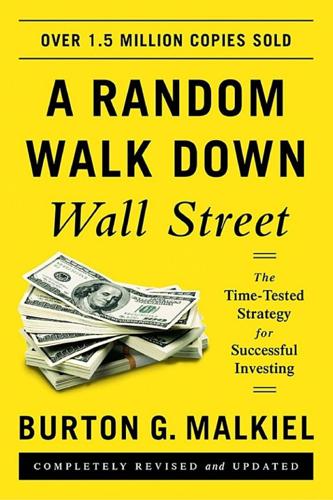
A Random Walk Down Wall Street: The Time-Tested Strategy for Successful Investing (Eleventh Edition)
by
Burton G. Malkiel
Published 5 Jan 2015
In this kind of world, a sucker is born every minute—and he exists to buy your investments at a higher price than you paid for them. Any price will do as long as others may be willing to pay more. There is no reason, only mass psychology. All the smart investor has to do is to beat the gun—get in at the very beginning. This theory might less charitably be called the “greater fool” theory. It’s perfectly all right to pay three times what something is worth as long as later on you can find some innocent to pay five times what it’s worth. The castle-in-the-air theory has many advocates, in both the financial and the academic communities. The Nobel laureate Robert Shiller, in his book Irrational Exuberance, argues that the mania in Internet and high-tech stocks during the late 1990s can be explained only in terms of mass psychology.
…
Not being greedy himself, the promoter promptly closed up shop and set off for the Continent. He was never heard from again. Not all investors in the bubble companies believed in the feasibility of the schemes to which they subscribed. People were “too sensible” for that. They did believe, however, in the “greater fool” theory—that prices would rise, that buyers would be found, and that they would make money. Thus, most investors considered their actions the height of rationality, expecting that they could sell their shares at a premium in the “after market,” that is, the trading market in the shares after their initial issue.
…
S., 134 globalization, 204 GM (General Motors), 362–63 “go-go” funds, 66 gold, 293 as investment, 253, 322–23, 338, 343 risks of, 309, 323 Goldman, Sachs Trading Company, 54, 80, 172 Goldwyn, Samuel, 126–27 Google, 44, 130 government, U.S., in housing bubble, 101, 106 Graham, Benjamin, 32–33, 105, 119, 184, 262 Grantham, Jeremy, 284 Great Depression, 102, 103, 335 “greater-fool” theory, 35, 45, 242, 250 Great Myths of 1929, The (Bierman), 54 greed, 37, 41 Greenspan, Alan, 285 Gross, Gary, 70 Grossman, Sanford, 287 Groupon, 167 group think, 239–41 growth rate, see earnings growth; rate of return growth stocks, 57–59, 366–67 changing premiums for, 128 declines in, 59, 71 overvaluation of, 235 P/E multiples for, 121–23, 130–33 risk of, 130 value stocks vs., 261–62, 273, 274–75 Grubman, Jack, 88, 89 GSCI index, 204–8 Guggenheim Equal Weight, 280 Guggenheim Investments, 271 Guild, S.
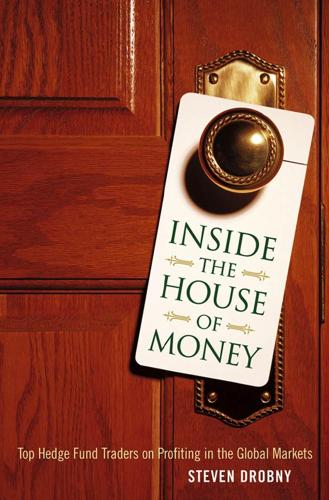
Inside the House of Money: Top Hedge Fund Traders on Profiting in a Global Market
by
Steven Drobny
Published 31 Mar 2006
Markets are always right, so maybe there’s something else out there on the horizon that we don’t know about.Today’s bond prices are telling me I’m wrong, and I respect that. I worry that there are a lot of people who are THE FLOOR TRADER 205 THE SLOWER FOOL THEORY We are playing a variant of the Greater Fool Theory which should be called the Slower Fool Theory.According to the Greater Fool Theory, investors buy things they know to be worth a lot less than they cost, on the hope that they can find a greater fool to sell to. It is not such a great strategy since there are not enough fools to go around. Following the Slower Fool Theory, . . . my plan . . . is to be faster than the other fools holding [similar positions] and liquidate before the oncoming economic Armageddon devastates them. . . .To the extent that everyone believes the crisis is sometime in the future and somebody else’s crisis, the game is viable.
…
I don’t do relative value trades for two reasons: (1) Negative gamma is implicit in relative value trading because it works on regression to the mean; and (2) it is very labor intensive, which drives me nuts. I came from a spread trading background so I very much understand all this carry stuff. It’s not quite the greater fool theory, but you’re always expecting somebody to value a spread a bit tighter than you did.That works until someone decides to sell.That’s why you see RV funds with perfectly smooth returns of 1 percent per month for years, until all of a sudden there’s a massive drawdown. I have an absolute fear of negative gamma.
…
See also Global macro market major events; Global macro markets Global macro market major events, 10–21, 23–28, 48–49 Global macro markets, 24, 32–34 Global micro, 32–34, 257 Global risk, 204 Going long, 54 Gold, 63–64, 152–153, 219–220, 226–228, 230, 246, 268 Goldman Sachs, 10, 32, 71, 73–78, 90–92, 95–96, 98–100, 163, 245–246, 284 Goldsmith, Sir James, 246 Gorton, David, 311–324 Government bonds, 141 Grau, Bennet, 90 Great Britain, 15, 136, 209. See also Bank of England; British pound; Sterling; United Kingdom Great Depression, 6 Greater Fool Theory, 205 Greece/Greek T-bills, 289, 305, 321–322 Greed, 207 Greenspan,Alan, 13, 17, 26, 84, 106, 160, 168–170, 172, 195–197, 206, 229–230, 350 Greenspan put, 13, 25, 29 Gross, Bill, 203 Gross domestic product (GDP), 265, 324 Growth stocks, 44, 59, 69 G7 countries, 93 G10 countries, 327–328 Guinness of Nigeria, 60 Gutfreund, John, 158 Hang Seng futures, 48 Harris,Yra, 12, 16, 199–215 Harvard Management Company, 53, 58 Head-and-shoulders pattern, 165 365 Hedge fund(s), xi, 129–130, 142–143, 186, 197–198, 204, 280–282, 286, 300, 312, 337–338 Hedging, 319 Heffernan, Mark, 171 Herd mentality, 20, 106–107 HFR global macro index, 17 HFR Group, x, 1 High-cost assets, 261 High-yielding currencies, 55 Historical returns, 62, 300 Home builders, 242–243, 252 Hong Kong, 63, 261 Horizon trader, 134 Hostetter,Amos, 9 Hot Commodities (Rogers), 217, 239 Hotimsky, Marc, 117–118 Housing bubble, 193, 195, 349 Housing market, 168–169, 194 Housing stocks, 274–275 Human bias, 50 Hungary/Hungarian forint, 277, 293 Hunt brothers, 206 Hurdles, 304 Hyperinflation, 197 Iceland, inflation index-linked housing bonds, 65–66 Icelandic krona, 66 Illiquidity, 60, 205, 336 Implied volatility, 46 India, 60–61, 67, 152, 239 Indonesia, 63 Indonesian recap market, 65 Inflation, implications of, 7, 32, 68, 110, 113, 123, 126, 166–169, 179, 196, 227 Institutional investors, 337 Interest rate(s), 13–15, 17, 26–27, 32, 46–47, 49–51, 64, 67–68, 82, 95, 106, 109–110, 112, 117–118, 122–124, 134, 138–139, 142, 146, 148, 167, 169, 173–174, 182, 195, 200, 205, 230, 285, 296, 300, 312, 315, 317, 319, 328, 331, 335 International equities, 8 International Monetary Fund, 5 Internet stocks, 272, 285 366 In-the-money options, 260 Inverse floaters, 51 Investment Biker (Rogers), 217 Investor pressure, 133 Irrational exuberance, 26 Islamic countries, 223–224 Italy/Italian government, bonds, 17, 85–87, 154, 167 January effect, 177 Janus, 281 Japan, 18, 77, 110, 117, 179, 184, 191, 197, 226, 261, 282–283, 286, 288, 289–290, 318, 327–328 Japanese yen, 19–20, 38, 76–79, 117, 122, 193, 221–222, 319, 336–337 Jones,Alfred Winslow, 8 Jones, Paul Tudor, 9–10, 12, 33, 163, 171–172, 203, 214, 253 JP Morgan, 246, 253–254, 283, 297, 309 Junk bonds, 188 Junk spreads, 251 Karachi Stock Exchange Index (KSE100), 298 Keynes, John Maynard, xiv, 5–6, 10, 31, 164–165, 277, 333–334 King’s College Cambridge Chest Fund, 5–6 Kooyker,Willem, 9 Korea, 261, 300, 305.
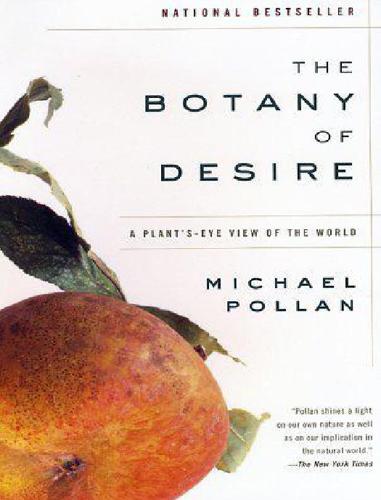
The botany of desire: a plant's-eye view of the world
by
Michael Pollan
Published 27 May 2002
In a satirical pamphlet describing the scene, an old-timer advises his neophyte friend to drink up: “This trade must be done with an intoxicated head, and the bolder one is, the better.” • • • The bubble logic driving tulipomania has since acquired a name: “the greater fool theory.” Although by any conventional measure it is folly to pay thousands for a tulip bulb (or for that matter an Internet stock), as long as there is an even greater fool out there willing to pay even more, doing so is the most logical thing in the world. By 1636 the taverns were crowded with such people, and as long as Holland remained home to an expanding population of greater fools—people blinded by their desire for instant wealth—the truly foolish act would have been to abstain from the tulip trade.* Even so, there was more to the windhandel than mere wind.
…
(FDA) forgetting, psychological importance of Forsline, Phil Forsyth, Danny Fort Wayne (Indiana) France: potatoes in romantic poets in roses in tulips in Franklin, Benjamin Frazer, James Frederick the Great fruits: coevolutionary role of foraging for forbidden in gardens see also apples fungi: cultivated by ants potato blight psychoactive fungicides Galápagos Islands Gallagher, Catherine Garden of Eden gardens: aesthetic appeal of as conspicuous displays as ecosystems in England experimentation in and human desire for control insects’ roles in produce from psychoactive plants in sexual selection in wildness within see also agriculture; cannabis; coevolution; flowers; plants; potatoes; tulips Garnet Chile potato genetic engineering: and organic farming of plants of seeds see also Monsanto corporation; NewLeaf potatoes; pollution, biological Genetic Use Restriction Technologies (GURT) Geneva (New York): see Plant Genetic Resources Unit Gerard, John Germany, potatoes in Gheel ende Root van Leyden tulip, price of Ginsberg, Allen global warming Golden Bough, The (Frazer) Golden Delicious: ancestors of as commercial apple parent original tree Goody, Jack grafting, history of Grand Army Plaza (New York) grapes see also wine Great Apple Rush “greater fool” theory Greeks, ancient: concept of true beauty and fruit tree grafting religious outlook of views on intoxicants see also Apollo; Dionysus; Euripides; Herodotus; Plato; Plutarch Grinspoon, Lester hallucinogens Harrison, Jane hashish see also cannabis Hawkeye apple Heath, Mike hemp see also cannabis Herbert, Zbigniew herbicides: genetic resistance to in potato farming Herodotus heterozygosity: of apples of tulips Hiatt, Jesse History and Social Influence of the Potato, The (Salaman) Hjelle, Dave Holland: cannabis cultivation in tulip cultivation in see also tulipomania Hope, Bob How the Mind Works (Pinker) Howlett, Allyn human desires: see beauty; control; intoxication; sweetness Huxley, Aldous hybridization: of apples in gardens of potatoes of tulips Idaho, potato farming in imagination Coleridgean idea of natural history of human Imperial Botanic Garden (Vienna) Incas, potato cultivation by Indiana, John Chapman in Indians, American: see Native Americans Indo-Europeans Innocent VIII, Pope insecticides see also Bacillus thuringiensis (Bt); DDT; pesticides insects: cannabinoid receptors in as pest controls resistance to Bt in role in pollination (see also aphids; bees; Colorado potato beetle; pests) intellectual property, plant genes as intoxication: in animals classical Greek views on effects of human desire for neuroscience of and plant chemistry see also alcohol; cannabis; drugs; entheogens Ireland: famine in potato growing in nineteenth-century peasant life in Johnny Appleseed: see Chapman, John Johnnyweed (stinking fennel) Jonagold apple Jonathan apple Jones, William Ellery Kazakhstan Keats, John Ladurie, Le Roy Lady apple lale devri (Tulip Era) laudanum Lenson, David Louis XVI, king of France Ludlow, Fitz Hugh Lumper potato Macintosh apple Malthus, Thomas Robert Malus domestica see also apples Malus sieversii Mansfield (Ohio) Marie Antoinette Marietta (Ohio) Marihuana Reconsidered (Grinspoon) marijuana: see cannabis Marx, Karl Massachusetts Horticultural Society McDonald’s: influence on potato farmers of use of NewLeaf potatoes by Mechoulam, Raphael Mellon, Margaret memes, and cultural evolution memory: as defense against experience effects of cannabinoids on see also forgetting, psychological importance of Mère Brune tulip mescaline see also peyote Mexico, as cannabis source milkweed Mohican River Monitor (pesticide) monoculture Monsanto corporation Monsanto corporation (cont’d): see also genetic engineering; NewLeaf potatoes Morgan, John Mount Vernon (Ohio) Muskingum River mutation Mysteries of Eleusis Myzus persicae Nation, Carry Native Americans: and hallucinogens maple syrup use by in Northwest Territory see also Eskimos; Incas natural selection see also sexual selection nature: duality of human relationship to in Judeo-Christian tradition Nepeta cataria net necrosis Netherlands: see Amsterdam; Holland NewLeaf potato: in author’s garden commercial farming of as genetically modified crop safety questions about Newtown Pippin Nietzsche, Friedrich Northwest Territory see also Indiana; Ohio nutritional value, as criterion for selection oak trees, resistance to domestication of Ohio River Ohio (state): Chapman in as nineteenth-century American frontier see also Brilliant (Ohio); Defiance (Ohio); Mansfield (Ohio); Marietta (Ohio); Mount Vernon (Ohio); Northwest Territory “Old Man of the Mountain” On Drugs (Lenson) opiates: cultural roles of and endorphine system opium: effects of as medicine poppies orchids: breeding of Orphyrus or prostitute organic farming Origin of Species, The (Darwin) Papaver somniferum Paracelsus paraquat patents, for plant genes pattern, as beauty principle Pauw, Adriaen Pavord, Anna Pennsylvania, western peonies: beauty of breeding of Dionysian quality of pollination of symbolism of Peru: potatoes from quinine discovery in see also Andes; Incas pesticides see also Bacillus thuringiensis (Bt); DDT; insecticides pests: coevolution with plants of genetic resistance to human efforts to control and plant toxins see also aphids; Colorado potato beetle; insects; monoculture; pesticides; potato blight peyote photosynthesis Phytophthora infestans Pinker, Steven pitcher plants Pizarro, Francisco Plant, Sadie Plant Genetic Resources Unit (Geneva, N.Y.)
…
Finding no takers, he tried again at 1,100, then 1,000 . . . and all at once every man in the room—men who days before had themselves paid comparable sums for comparable tulips—understood that the weather had changed. Haarlem was the capital of the bulb trade, and the news that there were no buy-ers to be found there ricocheted across the country. Within days tulip bulbs were unsellable at any price. In all of Holland a greater fool was no longer to be found. In the aftermath, many Dutch blamed the flower for their folly, as if the tulips themselves had, like the sirens, lured otherwise sensible men to their ruin. Broadsides excoriating the tulipomania became best-sellers: The Fall of the Great Garden-Whore, the Villain-Goddess Flora; Flora’s Fool’s Cap, or Scenes from the Remarkable Year 1637 when one Fool hatched another, the Idle Rich lost their wealth and the Wise lost their senses; Charge Against the Pagan and Turkish Tulip-Bulbs.

Easy Money: Cryptocurrency, Casino Capitalism, and the Golden Age of Fraud
by
Ben McKenzie
and
Jacob Silverman
Published 17 Jul 2023
The point is that just because a lot of people think that bits of computer code are valuable doesn’t mean that they actually are valuable. During bubbles, folks often speculate wildly, hoping to sell a thing they see rising in price to someone else for even more money. In economics, this is called the greater fool theory. The price of an asset becomes uncorrelated with its actual value, and it ends up only being worth what you can convince the next person, the person more foolish than you, to pay for it. The first speculative bubble in history was also one of the most absurd: tulip mania. Between 1634 and 1637, citizens of the Dutch Republic became obsessed with the flower.
…
See also Bankman-Fried, Sam futures contracts Galaxy Investment Partners gambling Garcia, Mario Garlinghouse, Brad The General Theory of Employment, Interest, and Money (Keynes) Gensler, Gary Gerard, David Giancarlo, Christopher Gillibrand, Kirsten Glass-Steagall Act Goldman, William gold standard Goldstein, Jacob Goldstein, Nuke Gomez, Mario Gong, Aaron Gottheimer, Josh Great Depression greater fool theory Griffin, John M. Haber, Stuart Harris, Chad Harris, Jim Harrison, Brett Haspel, Gina Hays, Mark Henson, David (Reverend) Henson, Harold “Hal” Hoegner, Stuart Hogeg, Moshe Howey Test Imas, Alex Indiana Jones and the Last Crusade (film) inelastic supply Initial Coin Offering (ICO) Irrational Exuberance (Shiller) “Is Bitcoin Really Untethered?”
…
And because in crypto there is no actual underlying asset beneath all that leverage—at least with subprime if you squint hard enough there were houses involved—there was also no floor to how low the price of crypto could drop. It could, in fact, go to zero. An asset whose value derives solely from greater fools is only priced as high as the last idiot willing to buy it. Rigidity comes into play when leverage is being unwound. When parties use leverage, it’s all fun and games when the numbers are going up, but if they go down people have to sell stuff. The more stuff that has to be sold and the more entities involved, the bigger the potential problem.

The Rent Is Too Damn High: What to Do About It, and Why It Matters More Than You Think
by
Matthew Yglesias
Published 6 Mar 2012
But the cost of building a 1950-sized house has stayed approximately constant. The impression that building costs are rising is primarily an illusion generated by a failure to appreciate the extent to which we’re building bigger homes. So how do people make money in real estate? Sometimes it’s the “greater fool” theory. Your investment doesn’t need to make sense if you can hand it off to some other sucker. But the main reason it’s possible to make money investing in real estate is that there’s more to real estate than buildings. A house is like a boat, but when you buy a boat you don’t also become the owner of a slice of ocean.
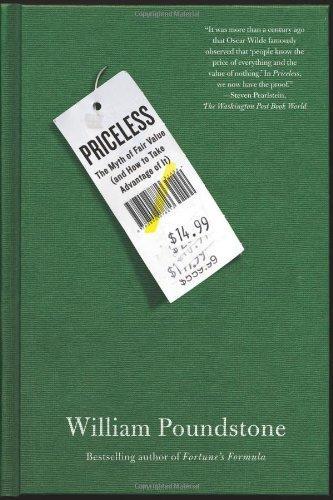
Priceless: The Myth of Fair Value (And How to Take Advantage of It)
by
William Poundstone
Published 1 Jan 2010
And, of course, some of them were right. As long as they got out before the crash, they earned a lot of money at the expense of the poor folks who were left holding the bag.” This is known as the “greater fool” theory. People bought tech stocks in the late 1990s, and real estate in the 2000s, not necessarily because they thought the prices were sensible but because they believed they could sell them at a profit to an even greater fool. What about value investors (those rare souls who are nobody’s fool)? In Camerer’s experiment, they were left on the sidelines. Value investors would have sold their two shares early, after the “true” value dipped below $3.50.
…
H., 20 Deutsche Bahn, 173 Deutsche Telekom, 172 Diaconis, Persi, 81 Dial soap, 5 Diamond, Peter, 227, 228, 230–32 diapers, disposable, 153–54 dictator game, 118–19, 283 Discovery Channel, 94 divorces, contentious, 234–36, 238 Doctors Without Borders, 119 Dow Jones, 7; Industrial Average, 262 Drexler, Mickey, 203, 205 Duke University, 151 Dunphy, Frank, 267, 268 Duracell batteries, 180 Dyers (spiritualist couple), 38 eBay, 186 Econometrica, 59, 102 economic man, fiction of, 55; gender and, 236 Economic Policy Institute, 256 Eddie Bauer clothing company, 190 Edmund’s New Car Prices, 242 Edwards, Ruth, 53 Edwards, Ward, 49, 50, 52–55, 62, 71, 72, 82, 86, 126–28 Einhorn, Hillel, 196 Einstein, Albert, 57, 74, 82, 91 Elliman, Douglas, 219 Emerson, Ralph Waldo, 68 Emirates Airlines, 7 endowment effect, 66 Energizer batteries, 180 Enron Corporation, 234 Envirosell, 150 Erasmus University, 133 Erikson, Erik, 85 Eskildsen, Paul, 25–27 Esposito, Meade, 116 Everybody Loves Raymond (television show), 255 executive compensation, 235–36, 256 expected utility model, 51 extremeness aversion, 156–57 Ezarik, Justine, 172 Facebook, 195 fairness, 105–108, 110, 124, 218, 286; appearance of, 116; of jury awards, 20; opportunity price increases and, 161; in ultimatum game, 114 Family Guy, The (television show), 246 FareCompare.com, 183 Farrelly brothers, 109 fast food: bundling of, 160; charm prices of, 186, 188; see also McDonald’s Fechner, Gustav, 29–32, 39, 224 50 Cent, 186, 188 FIFO (first-in-first-out) inventory valuation, 227 Firesign Theatre, 175 Fisher, Irving, 223–26, 232 Fisher, Margaret, 224 flat-rate billing plans, 174 Forbes magazine, 189 For the Love of God (Hirst), 266 Fortune 500 companies, 208 Foundations of Uncertainty and Risk (FUR), 60 Four Queens Casino (Las Vegas), 49, 71–72 France, anti-Semitism in, 84 Frasier (television show), 255 free market, utopian economics of, 56 free offers, 193–95 Freud, Sigmund, 82 Friedman, Milton, 56, 58, 59, 77, 78 Friends (television show), 255 Froot Loops cereal, 5 Fruit of the Loom underwear, 189 FSBO (for sale by owner), 186, 205 game theory, 50, 112, 121 Gandolfini, James, 255 gender, 236, 245–47, 283; car sales and, 241–44; jury awards and, 279; salaries and, 237–38, 240; in ultimatum game, 248–52 General Electric (GE), 115, 234–36, 255, 257–58 General Motors, 7 George Mason University, 258 German Institute for the Study of Labor, 213 Germany, 131; car repairs in, 269–71; hyperinflation in, 225–26; Nazi, 83–84; railroads in, 173 Gibbs, Josiah Willard, 224–25 Gigerenzer, Gerd, 126, 129 Ginsu knives, 169 Ginzberg, Eli, 188 Gladwell, Malcolm, 126 Gnau people, 123 Goffstein, Benny, 49, 71 Gold, David, 184, 185, 189 Goldberg, Pinelopi Koujianou, 243, 244 Goldman Sachs, 7 Gompers, Samuel, 207 Goode, Miranda, 284–86 Google, 194 Google Maps, 217 Graham, Benjamin, 260, 263 Grammer, Kelsey, 255 Great Depression, 284 greater fool theory, 264 Greenberg, Hank, 259 Grether, David M., 78–80 Groundhog Day (movie), 208–209 Guinness Book of World Records, 227 Güth, Werner, 112–14 Halevy, Yoram, 114 Hand, Learned, 270 Hannah Montana tour, 166–67 Hardball (television show), 258 Harvard Business Review, 234 Harvard University, 28–30, 42–43, 50, 59, 102, 126, 250; Psycho-Acoustic Laboratory, 28–29, 42 Haughney, Christine, 219 Hebrew University, 82–84, 121 Heilbroner, Robert, 55 Heinrich, Joe, 121–22 Helson, Harry, 38–41 Hermès Group, 155, 156 Hertel, Jim, 149 heuristics, 52, 67, 87–90, 174, 197; attacks on, 125–28 Hill, Dan, 156 Hilton Hotels, 7 Hirst, Damien, 266–68 Hoffman, Elizabeth, 118–21, 129–30 Hoffman, Paul, 26–28, 87, 194 Hogarth, Robert, 196 Holbein, Hans, 39 Hollywood Bowl, 15 Home Encyclopedia (Fechner), 30 honesty boxes, 282–83 Honey Smacks cereal, 5 Honeywell International, 6 Hooters restaurant chain, 160 How to Live (Fisher), 224 HSBC, 7 Hsee, Christopher, 287, 288 Huber, Joel, 151–53, 156 Hublot watches, 155–56 Hunt, William, 40 Hutchinson, Shelly, 176 hyperinflation, 223, 225–26 IBM, 148 Illinois, University of, 18 illusions, 216–17; money, 225–33; perceptual, 36–37, 84–85 Immelt, Jeff, 258 Indonesia, 123 Indow, Tarow, 44 inflation, 223–32; 99-cent stores and, 185; stock market and, 101, 264–65; top salaries and, 256–59 infomercials, 169–71, 260–61 Intel Corporation, 6 Internal Revenue Service (IRS), 219 Internet, 35, 181, 232, 253, 280–81; airline ticket prices on, 182; rebate program for purchases on, 177; user-generated content on, 195 inventory valuation methods, 227 Iowa, University of, 125 Israel, 81–84, 88, 121, 136 Italy, soccer fans in, 249 Jacowitz, Karen, 144 James, William, 30 Japan, executive compensation in, 256 J.

Manias, Panics and Crashes: A History of Financial Crises, Sixth Edition
by
Kindleberger, Charles P.
and
Robert Z., Aliber
Published 9 Aug 2011
Homer Hoyt, One Hundred Years of Land Values in Chicago: the Relationship of the Growth of Chicago to the Rise in Land Values, 1830–1933 (Chicago: University of Chicago Press, 1933). 11. Quoted in Hoyt, Land Values, p. 165. This suggests that the ‘greater fool theory’ – a speculator buying an asset he believes is overpriced because he thinks he can sell it to a greater fool, widely quoted today – goes back at least a century. 12. Fritz Stern, Gold and Iron: Bismarck, Bleichröder, and the Building of the German Empire (London: Allen & Unwin, 1977), p. 161. 13. Hoyt, Land Values, p. 102. One stimulus to the boom was the huge fire of 6 October 1871, which destroyed somewhat more than one-fourth of the 60,000 houses in the city. 14.
…
The prices of petroleum and copper and wheat and other primary commodities were increasing in this inflationary episode, but the price of gold increased much more rapidly. At some stage in the late 1970s, investors were extrapolating from the increase in the market price of gold from Monday to Tuesday to project the market price on Friday; they purchased gold on Wednesday in anticipation that they could sell at a higher price on Friday. The ‘greater fool theory’ was at work, some of these buyers may have realized that the increase in price was a bubble and anticipated that they would be able to sell at a profit before the bubble imploded. At the end of the 1990s the market price of gold was a bit less than $300 an ounce, and once again the cliché that gold is a good inflation hedge seemed valid; the price of gold had increased by a factor of fifteen since 1900 and the price of a market basket of US goods had increased by about the same amount.
…
Pyramid arrangements often involve sharing of commission incomes from the sale of securities or cosmetics or food supplements by those who actually make the sales to those who have recruited them to become sales personnel. The bubble involves the purchase of an asset, usually real estate or a security, not because of the rate of return on the investment but in anticipation that the asset or security can be sold to someone else at an even higher price; the term ‘the greater fool’ has been used to suggest the last buyer was always counting on finding someone else to whom the stock or the condo apartment or the baseball cards could be sold. The term ‘mania’ describes the frenzied pattern of purchases, often an increase in prices accompanied by an increase in trading volumes; individuals are eager to buy before the prices increase further.
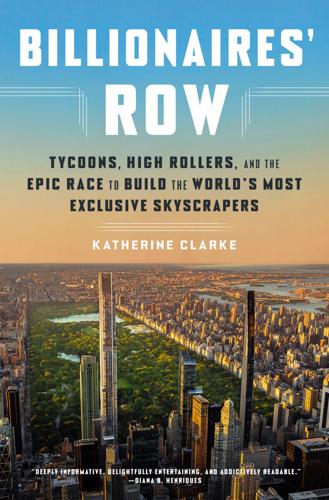
Billionaires' Row: Tycoons, High Rollers, and the Epic Race to Build the World's Most Exclusive Skyscrapers
by
Katherine Clarke
Published 13 Jun 2023
Now, under newly elected President Donald Trump, there was fresh uncertainty from foreign buyers. A drop-off in oil prices and a surge in U.S. anti-Muslim sentiment was now keeping buyers from the Middle East on the sidelines, too. Still, even as the market took a dive, most developers clung to their trophy price tags—and many even raised them. “It’s like the ‘greater fools’ theory,” said Jonathan Miller, the appraiser. “Prices were continuing to rise but sales activity was collapsing. In other words, they were running out of fools to send the market further up.” * * * — BY THE END of 2017, though, it was impossible to ignore the signs. The market was going from bad to worse for New York real estate developers.
…
See also 111 West 57th Street Barnett and, 169 basic facts about, 169–70 Bianco’s lawsuit against, 223–25, 275, 278–80, 332, 349, 350 New York Telephone building, 163–64 111 West 57th Street characterized as failure by, 350 Perlmutter and, 177 regrets about building 111 West 57th Street, 333 sales at 111 West 57th Street and, 222 Saudi billionaires and, 183–87 Spruce’s “strict foreclosure” and, 277–78 Steinway Hall and, 172 Stern and, 170–72, 220–21 Stern-union fight, 216, 219 supertall project in Miami, 349 Walker Tower and, 170 Manafort, Paul, 38, 39–41, 43–46 Manhattan Special Midtown District, 145 Mansion Tax, 269, 309 Mansour Bin Zayed al Nahyan, 50 Marble Row, 15–16 Marcos, Ferdinand, 191 Marcos, Imelda, 191 Marcus, Silvian, 109 Marks, Howard, 188 Marshall, Cathy, 122, 132, 133 Mayflower Hotel, 130–31 McCourt, Jamie, 118–19 Mechanic, Jonathan, 11 Meister, Stephen, 278–79 Mendelsohn, Nicole, 336 Mercier, Laura, 166 Mermel, Myers, xiv, 73 Mermelstein, Edward, 89, 90, 267, 297 Meta, 336 Metropolitan Life Insurance Company Tower, 9, 10, 24–25, 48 Meyer, Jane, 24 “mezzanine financing,” 72 Michael Feinstein, 334 Michaels, Howard, 279 Middle East, supertalls in, 48–49 Miller, Jonathan anti-billionaire sentiment, 304 “aspirational pricing,” 99 building of ultra-luxury condominiums outside of Billionaires’ Row, 262–63 developers’ mentality, 348 dilapidated condition of New York Coliseum, 29 financing of One57 (2009), 52 Macklowe divorce appraisal by, 286 market slowdown, 262 new market category of Billionaires’ Row, 189, 190 penthouse owned by Adnan Khashoggi and, 17–18 prices and “greater fools’ theory,” 267 risk-awareness of post 2008 lenders, 43 Mills, Donna, 136 Mindel, Lee, 209 Mink Development, 333 Moelis, Ken, 266 Mogilevich, Semion Yudkovich, 45 Molyneux, Juan Pablo, 25 Mosdot Shuva Israel, 34 Moses, Robert, 28 Motown Cafe, 26, 27 Mott, Charles Stewart, 21 Mott, Stewart R., 21–23 Mubadala (Abu Dhabi sovereign wealth fund), 258 Mueller, Robert, 46 Muller, Evelyn, 55, 56 Municipal Arts Society (MAS), 146, 148 Muschamp, Herbert, 26–27 N Naftali, Miki, 316–17 Nahmad, Hillel “Helly,” 119 Newman, Margaret, 149 New Valley, 192 New York (magazine), 291 New York Coliseum, 28–29, 31 New Yorker, 24 “New York is dead” narrative, 316 The New York Observer, 91 New York Post, 125, 131, 253, 283, 284, 285 New York Telephone Company building, 162, 163–65 The New York Times, 10, 16, 17, 22, 23, 25–26, 27–28, 31, 38, 44, 58, 97, 123, 139, 144, 147–48, 198, 205, 237, 250, 252, 283, 303, 309, 316, 320 New York Times tower, 57 New York World Building, 48 NFT art pieces, 335–36, 343 Niami, Nile, 264 Nippon Club, 53 NoMad, high-rise condos in, 262 Nordstrom, 14, 75, 155, 270, 279 Nouvel, Jean, 147, 190, 266 NYC Crane Hoist & Rigging, 329 O Observer, 39 Ocasio-Cortez, Alexandria, 305–6 Och, Dan, 208, 340 Olayan America, 254 Olshan Realty, 338 Olympic Tower, 18–19, 20–21 Onassis, Aristotle, 18, 20 Onassis, Jacqueline Kennedy, 146 1MDB (Malaysia’s sovereign wealth fund), 255 1 Park Lane.
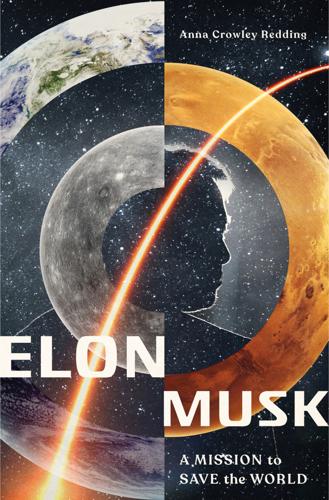
Elon Musk: A Mission to Save the World
by
Anna Crowley Redding
Published 1 Jul 2019
Remember that web browser company Netscape we talked about earlier? Well, Netscape went public in August 1995 and its share price had skyrocketed by the end of the year. “And then whether or not somebody knew what the Internet was, they knew that you could make money on the Internet somehow, even if it’s on the greater fool theory,”52 Elon explained. THROWBACK! Netscape launched its Navigator web browser in December 1994, and it quickly became the preferred way to surf the web. When the company went public nine months later, the stock was offered at $28. Within hours, its price had shot up to $74.75 a share. By December 1995 shares were trading as high as $171.
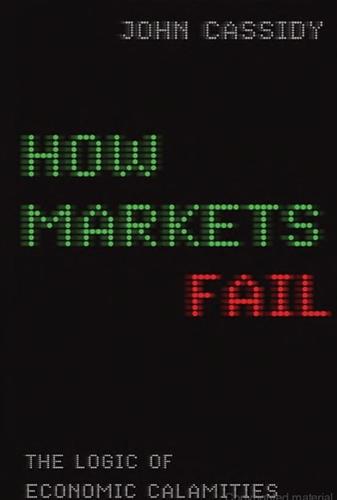
How Markets Fail: The Logic of Economic Calamities
by
John Cassidy
Published 10 Nov 2009
Like John von Neumann, the Hungarian genius who invented game theory, Keynes believed that simple parlor games have much to teach economists: they feature the sort of strategic interactions that are largely absent from orthodox economics, but that play such an important role in reality. On Wall Street, Keynes pointed out, investing is a “battle of wits,” the primary aim being “to outwit the crowd, and to pass the bad, or depreciating, half-crown to the other fellow.” Translated into today’s language, this is the “Greater Fool” theory of investing, which attracted a lot of attention during the Internet stock bubble of 1998–2000. On any conventional valuation basis, there was no justification for the prices at which stocks of companies such as America Online, TheGlobe.com, and Priceline.com were changing hands, but for a couple of years it appeared that there would always be another willing buyer.
…
Germain Depository Institutions Act (1982) Garzarelli, Elaine Gates, Bill GE Capital Geithner, Timothy General Electric general equilibrium theory generalized autoregressive conditional heteroskedasticity (GARCH) General Motors General Theory of Employment, Interest and Money, The (Keynes) GeoCities George Mason University Gerard, Harold Germany Nazi Glasgow University Glass-Steagall Act (1933) Gleason, Jeffrey Global Crossing global warming, see climate change Gödel, Kurt Goldman Sachs and AIG bailout government safety net for compensation of CEO of credit default swaps of reduction in assets of subprime mortgage securities issued by VAR models used by Google Goolsbee, Austan Gorbachev, Mikhail Gore, Al Gorton, Gary Goskomsten Gosplan Government National Mortgage Association (Ginnie Mae) Gramlich, Edward Gramm-Leach-Bliley Act (1999), see Financial Services Modernization Act (1999) Grateful Dead Great Crunch Great Depression Federal Reserve policies and financial statutes created during laissez-faire and unemployment during “Greater Fool” theory of investing Great Moderation Greeks, ancient Greenberg, Alan “Ace” Greenberg, Maurice “Hank” Greenberger, Michael Greenspan, Alan bubbles and Congressional testimony of deregulation advocated by development of new financial products encouraged by funds rate set by laissez-faire policy of political career of as Rand’s disciple retirement of Smith’s influence on on virtues of subprime mortgages Greenwald, Bruce gross domestic product (GDP) of Chile under Pinochet decline in health care spending as percentage of indebtedness relative to productivity and TARP as percentage of technical progress and Grossman, Sanford GSAMP TRUST 2006-NC2 Gulf Oil Guttentag, Jack Haldane, Andrew Hamilton, Alexander Hansen, Alvin Harberger, Arnold Hardin, Garrett harmony, illusion of Harrod, Roy Harvard University behavioral economics at Galbraith at John F.
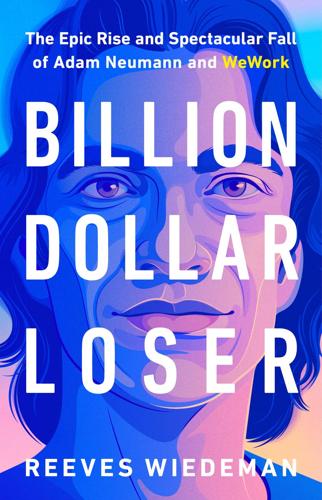
Billion Dollar Loser: The Epic Rise and Spectacular Fall of Adam Neumann and WeWork
by
Reeves Wiedeman
Published 19 Oct 2020
“There is a fool in every market,” Gurley wrote, quoting Warren Buffett. “If you don’t know who it is, it is probably you.” Investors wanted to believe Adam could fulfill his vision, and at least some of their faith seemed to rest on an expectation that he could convince the next person to kick in even more—the greater fool theory of finance. When Adam approached tech investors, he emphasized the money that could be made in real estate; to more traditional financiers, he talked about the promise of WeWork’s technology. Around 2015, Adam came up with a new pitch: WeWork was a “community company,” part of the sharing economy, with hallways that were designed to be as narrow as possible not because doing so allowed WeWork to squeeze in more paying tenants, but in order to force members to connect.
…
ISBN 978-0-316-46134-4 (ebook) LCCN 2020940737 E3-20200828-DA-NF-ORI Table of Contents Cover Title Page Copyright Dedication Epigraph Prologue Chapter One: Capitalist Kibbutz Chapter Two: Green Desk Chapter Three: 154 Grand Street Chapter Four: “I Am WeWork” Chapter Five: Sex, Coworking, and Rock ’n’ Roll Chapter Six: The Physical Social Network Chapter Seven: Reality Distortion Field Chapter Eight: Greater Fools Chapter Nine: WeLive Chapter Ten: Manage the Nickel Chapter Eleven: Mr. Ten Times Chapter Twelve: Me Over We Chapter Thirteen: Blitzscaling Chapter Fourteen: The Holy Grail Chapter Fifteen: WeGrow Chapter Sixteen: Game of Thrones Chapter Seventeen: Operationalize Love Chapter Eighteen: A WeWork Wedding Chapter Nineteen: Fortitude Chapter Twenty: The I in We Chapter Twenty-One: Wingspan Chapter Twenty-Two: Always Half Full Chapter Twenty-Three: The Sun Never Sets on We Chapter Twenty-Four: Brave New World Discover More Author’s Note Acknowledgments About the Author For Mom and Dad Explore book giveaways, sneak peeks, deals, and more.
…
But Benchmark wasn’t eager to lose favor with Neumann, and it didn’t have much standing in the fight, having just given Travis Kalanick similar control at Uber. Dunlevie relented, but not before offering a warning to Berrent and WeWork’s board. “I’ll just leave you with this thought,” Dunlevie said. “Absolute power corrupts absolutely.” Chapter Eight Greater Fools IN AN ARTICLE TITLED “Office of the Future,” about the most innovative company in commercial real estate, Fast Company magazine explained that the global economy was moving faster than ever, aided by the internet and a rise in entrepreneurship that entrenched real estate interests weren’t prepared to meet.
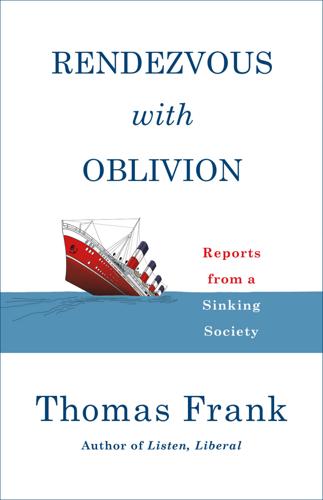
Rendezvous With Oblivion: Reports From a Sinking Society
by
Thomas Frank
Published 18 Jun 2018
Sometimes, according to a passage in the 2000 book Suburban Nation, by Andrés Duany, Elizabeth Plater-Zyberk, and Jeff Speck, the purpose of all this tacky architecture is to create a strong impression on a potential buyer in the first few minutes of a realtor-guided visit. These are assets, not homes. They are built to flip: human settlements organized around the premise of the Greater Fool Theory. * * * They weren’t called McMansions at first, of course; that epithet came later. The man who bears the most responsibility for popularizing the term seems to have been Duany, the well-known architect and proponent of “New Urbanism.” A Florida newspaper quoted Duany using the term in 1990, and he could be found using it himself in an article he co-wrote for the Wilson Quarterly in 1992.
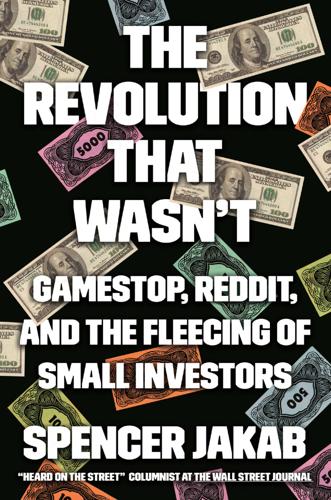
The Revolution That Wasn't: GameStop, Reddit, and the Fleecing of Small Investors
by
Spencer Jakab
Published 1 Feb 2022
Some saw a number like the $1,000 price that GameStop shares supposedly were going to hit, according to so many posts on WallStreetBets, and thought that there was some basis for it that better-informed people in the crowd had figured out. Many others just saw a line going up and to the right and figured they would be able to hop on and then hop off the ride before it stopped rising—the greater fool theory. Seth Mahoney, the young Robinhood customer and longtime WallStreetBets member, fell into the latter camp. He says he would scan social media constantly in 2020 and especially in early 2021 and jump on a stock he knew almost nothing about other than the hunch that the crowd was starting to push it higher.
…
Like Betting on Racehorses At face value, millions of young people beginning to invest in the stock market in 2020 and early 2021 was a good thing. Too few save and invest for their future. But the democratization of finance would only be to their benefit if they could harness the wealth-creating power of the market over decades—without winding up as the greater fools holding a speculative stock when it finally collapsed, and without then becoming convinced that the reason they lost money was that the market was somehow rigged. That could discourage them from remaining in the shareholder class for the long term. Only 15 percent of American households own stock directly, and nearly half have no investments, contributing to inequality and a looming retirement crisis.
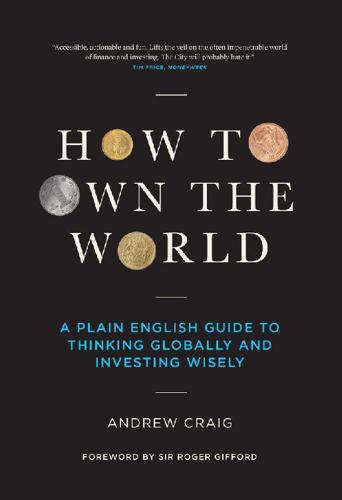
How to Own the World: A Plain English Guide to Thinking Globally and Investing Wisely
by
Andrew Craig
Published 6 Sep 2015
As often happens, many of these folk ended up looking foolish as they called the top time and again and then saw the market carry on going up. As John Maynard Keynes said: “The market can remain irrational longer than you can remain solvent.” Put another way, this is a classic example of “greater fool theory”. As long as there was a “greater fool” and an equally foolish bank willing to fund them, the market carried on going up, even though people were making quite ridiculous decisions about the “value” of the property they were buying. The Northern Rock situation in the UK was a direct result of this. In the US the whole edifice began crashing down in 2007, as more and more people were unable to fund their mortgage payments.
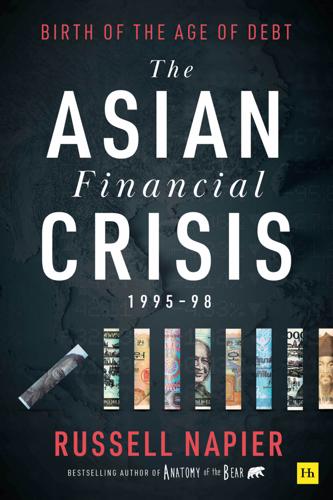
The Asian Financial Crisis 1995–98: Birth of the Age of Debt
by
Russell Napier
Published 19 Jul 2021
Many investors may not wish to participate in this current bonanza due to the risks involved. Author’s opinion That was an opinion I proffered in March 1997 and the boom ended in July! Given the likely ultimate denouement for this boom it was a recommendation based upon the greater fool theory. There was a clear lesson from the red chip boom that it just wasn’t possible to work out when the world would run out of greater fools. According to Adam Smith: The really old generation, the greybeards, they’re the ones with General Motors, AT&T, Texaco, Du Pont, Union Carbide, all those stocks nobody has heard of for years. The middle-aged generation has IBM, Polaroid and Xerox, and can listen to rock and roll music without getting angry.
…
The only way to outperform in this market is to employ a swinger to buy stocks and a greybeard to tell them when to sell. At 32, I was already well progressed into the middle age of Asian investments. In my opinion this game is still on, but to be safe you’d be better off asking a swinger. I was clearly too old for the greater fool game at 32 and not yet a greybeard, but time does march on. Even by 2020, the index that tracks the performance of the Chinese-affiliated stocks listed in Hong Kong remains well below the level it reached at the peak of the boom in late 1997. Looking back I would have thought that even by 1967 Adam Smith would have been aware that ‘swinger’ was perhaps not the best term to use to describe these new investors.
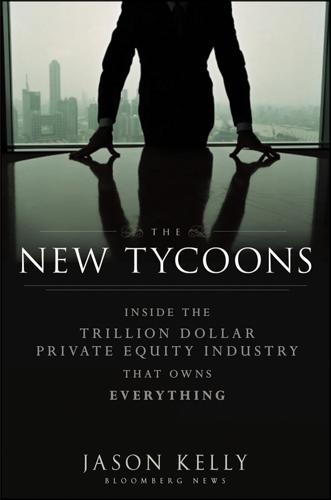
The New Tycoons: Inside the Trillion Dollar Private Equity Industry That Owns Everything
by
Jason Kelly
Published 10 Sep 2012
The seller is generally happy to get out. Investors, though, sometimes have some questions. These “pass the parcel” deals have the danger of being a game of financial hot potato, whereby somebody is going to be left holding on to something that’s not worth as much as they thought. There’s a fear that there’s a greater fool theory at work here. “You either have a superior insight, specialization, an angle that helps you pay a little more than the others, or you nudge the debt package and pay a higher price because you need to invest,” Neil Harper, managing director at Morgan Stanley’s private-equity fund-of-funds unit in Europe, told Bloomberg in 2010.
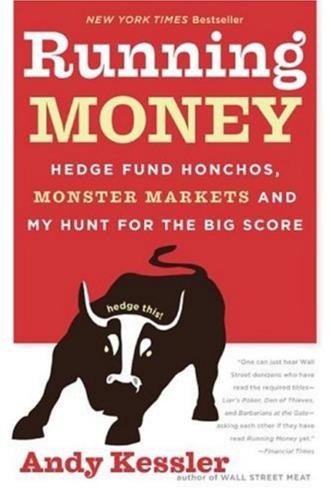
Running Money
by
Andy Kessler
Published 4 Jun 2007
“The second derivative of the change in industrial production numbers.” “Marginal flows into gold.” “I check the difference between personal income and consumer credit until it flashes bullish.” “Jobless claims lead interest rates, which lead consumer cylicals. ’Nuff said.” “It all works on the Greater Fool theory.” The most honest: “We’re indexed.” One guy, Jim Burkhardt from Chicago, gave me the best line: “Yeah, sure, I check all the stats, economic indicators, earnings H & Screw Conference 23 numbers, all that garbage. Everyone has them, so they don’t provide much of an edge.” “What does?” I asked.
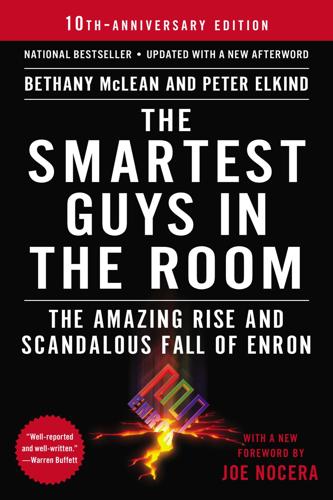
The Smartest Guys in the Room
by
Bethany McLean
Published 25 Nov 2013
More often than not, the winning company took the initial up-front risk, with plans to extract some quick profits by selling off pieces to other buyers once the project was under way. In some ways, that was prudent business: it was a way to diminish the risk. Yet that kind of business plan was predicated on the belief that someone else would always be willing to pay a higher price. On Wall Street, this is known as the greater fool theory. So while Mark may have been handed a division without any assets, she did have the wind at her back. And there was no doubt what she was expected to do: plant the flag for Enron in as many developing nations as she could. Mark’s team quickly put together a string of flashy, first-of-their-kind deals.
…
income statements of, 60 profits of, 56, 59–60, 61, 62, 67–68, 93 renaming of, 186 risk-control group at, 111, 115 as Skilling’s model for Enron, 105 “Enron CFO’s Partnership Had Millions in Profit,” 371 Enron Cogeneration, 73 Enron Communications, 188, 243 Enron Corporation, xxii, 1–2, 3, 8, 19, 79–83 accounting scandals of, see accounting; Arthur Andersen all-employee meetings at, 229, 323, 352–53, 356 analyst-associate program at, 120, 122, 214–15, 334 analyst meetings of, 176, 179–80, 242–44, 284, 314, 320–21, 323, 345 Andersen’s risk assessment of, 147–48 annual reports of, xix, 19, 168, 238 assets of, 409 Audit and Compliance Committee at, 130, 407 balance sheet of, 77, 94–95, 150, 156, 157–58, 165, 310, 321, 325–26, 346, 363, 368, 384 bank loans of, 18–19 bankruptcy of, xxiv, xxv, 79, 91, 112, 129, 153, 158, 160, 172, 205, 241, 306, 401, 403–5, 406, 408–10, 413–14 BBB+ rating of, 238 as “black box,” 322, 323 capital investments in, 320 cash crisis at, 378–405 cash flow of, 108, 112, 133, 150, 157, 158–61, 230, 232, 237, 321, 323, 326, 331, 340, 349, 373, 378, 388, 400, 408 charitable donations of, 48, 96, 164, 165 Come to Jesus meeting at, 25–26, 27 corporate culture of, xxv, 25–26, 40, 116, 120–23, 140, 152, 187, 235, 240–41, 300, 332–33, 335, 372, 396–97, 401, 403 credit rating of, 154, 161 deal making prioritized at, 121–22 debt of, 150, 154, 156–57, 161, 232, 237, 321, 323, 379–80, 395, 399, 403, 408 deferred-compensation program at, 401 Dominion Energy joint venture of, 47–48 downfall of, 71, 91–92, 113, 132, 147, 277, 295 downgrading of, 102, 235, 348, 374–75, 394–95, 400, 401, 403 as dysfunctional workplace, 56, 63 earnings of, 91, 92, 93–94, 102, 109, 125–28, 132, 133, 134, 141–42, 229–30, 232, 321, 324–25, 331, 339–40, 342–43, 346, 349, 369, 382, 400 environmentally friendly image of, 174, 225 ethics and values of, 193, 269, 275, 310, 353 Finance Committee of, 199, 366 financial filings of, 41, 304, 320, 330–31, 371 financial reports and statements of, 15, 42, 155, 189, 230, 231, 321, 324, 329, 357, 368, 370 focus groups at, 372 fundamentals group at, 221 Gas Bank at, 35–37 growth of, 150–51, 179, 232 HNG-InterNorth as origin of, 10, 13–14, 33 Industrial Group at, 130 internal audit department at, 17, 19, 21, 41 investment banking fees of, 234 investor confidence destroyed in, 346 investor relations department of, 231, 322, 345, 360 jets of, xxii, 3, 4, 51, 53, 86, 90, 96, 122–23, 175, 251, 302, 338, 346, 353, 367, 401, 405 junk credit rating of, 14, 403 lawsuits against, xxi, 380, 382, 396, 410–11 legal department of, 18, 20, 276, 328, 405 liquid-fuels division of, 21 liquidity of, 391 lobbying by, 172, 173, 265 as logistics company, 322 London office of, 239 losses of, 306, 309, 410 market value of, 240 mottoes of, 326 myths and legends about, 35, 52, 172, 222 nepotism in, 4, 90 off-balance-sheet vehicles at, see off-balance-sheet vehicles as overleveraged, 165 P&L at, 138 performance reviews at, 117–18, 123, 138, 152–53, 154, 224 Policy Committee at, 328 political contributions by, 87, 88 postbankruptcy, 155, 218, 409 PRC at, 63–64, 91, 121, 154, 215, 279, 335, 345, 372 preferred stock of, 156 profits of, 27, 44–45, 47, 60–61, 85, 92–94, 104–5, 108, 130–31, 133, 176, 179, 204, 230, 282, 295, 313, 384, 388, 403 proxy statements of, 237–38, 322, 328 public relations at, 262, 322, 326, 332, 339, 346, 352, 364, 371, 377, 384, 417 reputation of, 76 Research Group of, 192, 193 retirement accounts and employee stock holdings, 241–42, 401, 414 Risk Assessment and Control (RAC) at, 115–18, 129–30, 132, 141, 158, 181, 192–93, 195, 218, 220, 227, 246, 346, 373, 399 risk-management manual of, 132, 133 salaries and bonuses at, 138, 240–41, 397–98, 414; see also specific individuals SEC filings of, 324, 354, 357, 394, 399–400, 401–2 share buyback program at, 105 shareholders in, 53, 380, 407, 409–10, 414 skepticism toward, 321 skyscraper built by, 239, 367, 378 start-up mentality of, 372 stock of, xxv, 85, 92–94, 98, 99, 102, 105, 109, 125–27, 150, 154, 156, 176, 187, 191, 192, 195, 220, 223, 229–45, 263, 288, 302, 306, 309, 313–14, 318, 320, 322–27, 329, 334, 336–38, 340, 342–56, 363–64, 366–67, 370, 371–72, 374–75, 378, 380, 385, 389, 391, 394, 395, 397, 401–3, 407, 409–10, 412, 415, 416, 420–21 structured finance at, 149, 151 tax-avoidance schemes of, 128–29, 289 tax department at, 327 tilted E logo of, 174 trading at, 42, 43, 85, 125–26, 324, 330–31 transaction support at, 142 unkept promises of, 183 Washington public-affairs office of, 86 water business of, see Azurix Enron Corporation board of directors, 68, 73, 124, 151, 220, 239, 277, 326, 366, 367 audit committee of, 41, 115 compensation committee of, 370 Fastow’s finance vehicles and, 168, 169, 197–99, 200–201, 305, 306–7, 324, 376, 380, 393 finance committee of, 198 Lay and, 96–99, 314, 344–45, 349–50, 402–4, 415–16 Mark and, 247, 253, 260–61 Skilling’s resignation and, 342–43, 347 Enron Corporation Bonus Plan, 404 Enron Development, 70, 73–76, 80 Enron Economic Development Corporation, 202 Enron Energy Services (EES), 171–72, 175–84, 189, 213, 228, 255, 262, 263, 265, 299–304, 314, 321, 339, 346, 359, 364, 388, 396, 398, 404, 414, 417, 430 bonus system at, 180 commodity contracts at, 178 energy management acquisitions of, 183 layoffs at, 346, 353, 358–59 losses at, 179, 300, 304, 333, 388, 416, 421 Potemkin Village of, 179–80, 242 RAC task force at, 301 risk management staff at, 181 total energy outsource contracts at, 178 trading desk at, 181, 300, 304 Enron Europe, 73, 75, 103, 209, 216, 239, 388 Enron Field, 86, 367 Enron Finance, 35, 55–56 Enron Gas Marketing, 34, 56, 60 Enron Gas Services, 354 Enron Global Finance, 133–34, 148, 150–52, 156, 158, 161, 163, 164, 166, 168, 170, 196, 198, 212, 229, 237, 239, 249, 304–5, 308–9, 316, 327, 330, 335, 355, 413 Enron Global Power and Pipelines (EPP), 94–95, 132, 138 Enron Industrial Markets, 355, 377 Enron Intelligent Network, 187–88, 242, 286, 290 Enron International (EI), 44, 76–84, 158, 246, 247, 248, 251, 258–63, 290, 315, 322, 326, 333, 354, 387, 396 balance sheet of, 77, 94–95 compensation and bonuses at, 78–79, 95, 111, 180 Dabhol project of, 79–83, 94, 102, 260, 315, 340, 342, 353, 366, 373, 399, 409 end of, 260–61 government financing for, 88–89 Shell’s negotiations with, 112 “snowballing” at, 77, 95 Enron Liquids Pipeline, 98 Enron Media Services, 226 Enron NetWorks, 211 Enron North America, 186, 193, 207, 213, 274, 275, 309, 333, 388, 413 Enron Oil, 15–25, 220 bonuses at, 16, 17, 19 corporate tax returns of, 24 fake companies set up by, see Ilsa; Petropol; Southwest fraudulent accounting practices at, 21, 23 profit shifting at, 18, 19, 21, 24 scandal surrounding, 15, 47, 375 Enron Oil and Gas (EOG), 93–94, 101, 108, 109, 126, 245 public offering of, 94 spinoff of, 109–10 stock of, 219 Enron Online (EOL), 221–24, 244, 379–80, 398, 403 Enron Power, 52, 53, 73, 96 “Enron Prepares to Become Easier to Read” (Smith and Emshwiller), 360 Enron Prize for Distinguished Public Service, xxiv, 240 Enron Services Handbook, 271 Enron West Power trading desk, 266, 269, 271–76, 278–79, 282–83, 300, 309, 339 Enron Wholesale, 276, 299, 300, 303, 334–35, 339, 387–88, 405 Enron Xcelerator, 302, 334 EOG, see Enron Oil and Gas EPP, see Enron Global Power and Pipelines equity analysts, 237, 340 equity investors, 189–90, 365 equity markets, 150, 154 equity offerings, 235 ERNB (Enron’s Rhythms Net Bet), 194 Ernst & Young, 148 EterniTV, 343, 344 Euromoney, 140 Evans, Donald, 385 Everglades, 254 Export-Import Bank, 74, 88–89 Exxon, 1, 5, 6, 7, 241 ExxonMobil, xxv, 241 fair market values, 205 Fallon, Jim, xiv, 334–35, 337, 404 FAS 125, 293 FAS 140, 157 Fastow, Andrew, xiii, xxiii, xxiv, 122, 131, 133–41, 143, 152, 156, 214, 227, 237, 264, 334, 335, 343, 347, 355, 357–58, 390, 425, 428 Azurix deal of, see Marlin background and education of, 134 Baxter’s concerns about, 152, 163, 333, 356, 408 children of, 139, 170 complex deals of, 133, 151, 155–56, 192, 383 COO aspirations of, 353, 359 deals of, 230, 251 early career of, 136 earnings and wealth of, 138, 165, 169–70, 201, 212, 313, 328, 362, 365–66, 376, 381, 414 on EES board, 184 EES financing and, 175–76, 182 as Enron CFO, 136, 140–41, 143, 150–56, 189–90, 198, 200, 209, 311, 322–23, 329–30, 345, 353, 357, 360–62, 373–74, 379, 384–85 Enron’s dependence on, 189 equity offering proposed by, 150 financial structures and deals created by, 141, 229 firing as CFO of, 377–78, 380–81, 387, 391 Fortune interview with, 322 as head of corporate development, 328–29, 354 homes of, 294, 354, 365 indictments of, 411–12 insecurity of, 139 interpersonal skills of, 138 investment banks and, 163–64, 165 JEDI and, 67 LJM consequences for, 371–77 LJM sale of, 329–30, 353, 360 performance reviews of, 138 personal investments of, 165–70 personality of, 139–40 private equity funds of, see LJM Project Raptor and, see Project Raptor in retail-energy business, 138–39, 172 Rhythms deal and, 191–97 risk-control alien to, 140 SEC investigation and, 371–72 self-compensation schemes of, 134 Southampton scheme of, see Southampton Place partnership structured finance deals of, see Special purpose entities Wall Street Journal article and, 370–71 Fastow, Carl, 134 Fastow, Jeffrey, 139, 189, 365, 380 Fastow, Joan, 134 Fastow, Lea, xiv, 134–35, 152, 166, 168, 334, 361, 377, 380, 414–15 at Enron, 137, 139 on Enron art committee, 365 government charges against, 412 as heiress, 138, 365 and SPEs, 167, 170, 189 Fastow, Matthew, 189, 365, 380 Fastow, Peter, 364, 365, 371 Fastow Family Foundation, 170, 196, 206, 365 Fat Boy, 269, 274, 276, 335 FBI, xxi, 5, 408, 418, 422 Federal Energy Regulatory Commission (FERC), 167, 223–24, 270, 271, 273–74, 276–80, 335 Federal Power Commission, 6 Fergus, Gary, 275–76 Fewell, Melanie, 301–2 Feygin, Anatol, xvi, 341 fiber-optic system, 185, 187–88, 288 Fidelity, 319, 340 Fifth Amendment, xxiii, 416 Financial Accounting Standards Board (FASB), 142, 144, 323 First Boston, see Credit Suisse First Boston First Call, 231 First City National Bank, 30, 73 FirstPoint Communications, 185 First United Methodist Church, 385, 423 First Union, 202, 343 Fitch, 238, 323, 380, 394, 403 Fleischer, David, xvi, 179, 229, 243, 259, 314, 323, 325, 375 Florida, 254 as major market, 10, 11 Florida Gas Company, 6–8, 10, 11, 19, 25, 46 Fluckiger, Kellan, 278 Forbes, 32, 72, 83, 94, 98, 234 Fortune, xxiv, 83, 94, 105, 111, 116, 239, 253, 278, 291, 321–23, 332 50 Most Powerful Women in Business, 253 Fortune 500, 137, 326 forwards, 37 Foster, Joe, 402–3 Fountainhead, The (Rand), 214 France, 248–49, 256 fraud, 276, 410–20, 422 Freeman, Charles, 388 Freeman, David, 281 free market, 2, 3, 48, 74, 89, 167, 172, 216, 264, 267 freight trading, 225, 396 FRENDS, 136–37 Frevert, Mark, xiv, 359, 361–62, 391 Fried Frank Harris Shriver & Jacobson, 329 Friends of Enron, 166, 167, 189, 364 front-end loaded earnings, 230 Frontline, 281, 428 fuel-supply contracts, 158 Furst, Robert, xvii, 200, 207–8, 381 GAAP (general accepted accounting principles), 142–43, 160, 161, 163, 408 Garcia, Kim, 180 Garten, Jeffrey, 83 gas, 50, 131, 172, 177, 178, 240 see also natural gas Gas Bank, 33–37, 137, 212 Gas Daily, 227 Gates, Bill, 230 Gathmann, Bill, 152 Gaza Strip, 258 GE Capital, 180 General Electric, 46, 53, 67, 74, 81, 132, 133, 230, 314 George (robotrader), 216–17 Gerstner, Lou, 31, 32 Get Shorty, 270, 274, 282 Gibney, Alex, 426 Gieselman, Scott, xvii, 378–79, 387 Giga information group, 244 Glass-Steagall Act, 162 Glisan, Ben, xiv, 152–53, 156, 159, 161, 168, 169, 212, 237, 260, 279, 304–7, 315, 340, 346, 366, 371, 375, 377, 388, 394, 400, 412, 413–14, 420–21 as Fastow confidant, 152, 154 LJM and, 196–97, 198, 211, 306, 307, 309, 311, 364, 412 performance review of, 154 Global Crossing, 188 Global Finance, see Enron Global Finance Global Galactic agreement, 205 Global Water Reporter, 247 Goldman Sachs, 50, 109, 126, 164, 179, 222, 229, 234, 243, 259, 314, 321, 323, 325, 375, 378–79, 387, 401, 427 Goldman family, 417 Gorbachev, Mikhail, 240 Gordon, Rick, xvii, 234–35, 313 Gore, Al, 88 grain futures, 226 Gramm, Phil, 87, 96, 280 Gramm, Wendy, xiv, 96, 280 Grasso, Richard, 395 Gray, Rod, xiv, 95, 250, 253, 255 greater fool theory, 74 Greater Houston Partnership, 86 Greenspan, Alan, 240, 385 Greenwich NatWest, 194 Gross, Richard, xvii, 353 growth portfolio managers, 232 Grubman, Jack, 231, 234 Grubman, Richard, xvii, 325–26, 374 Grutzmacher, Patricia, 148 Guam, 74, 251 Guatemala, 74 Guinness Brewery, 364 Gulf & Western, 10 Gulf States Oil and Refining, 16 Hadar, Miriam, 134–35 Haedicke, Mark, xiv, 275–77, 309, 335, 405 Hain, Mary, 273, 274, 275 Hall, Stephen, 276, 277 Halliburton, 87 Hamel, Gary, xiv, 226, 239 Hannon, Kevin, xiv, 42–43, 57, 122, 288, 296, 415 indictments against, 412 Harding, John, xiv, 18–19 Harrison, William, 395 Harvard Business School, 31, 32, 45, 46, 51, 52, 57, 71, 73, 76, 391, 416 case studies of, 222–23, 239 Harvard Law School, 419 Hawaii, 125–0, 293 HealthSouth, 413 heat-rate swaps, 207 Hecker, James, xvi, 148–49, 362, 383 Heckmann, Richard, 248–49 hedge funds, 219, 319–21, 325, 385 hedging, 37, 131, 300, 305–6, 307–8 Hendrick, Max, III, 357, 360–61 Henry Pratt, 30 Hermann, Bob, 128 Herring, Joanne, 10 Herring, Robert, 10 Herrold, Beau, 424 Herrold, Linda Phillips, see Lay, Linda Highfields Capital, 325 high-tech investments, 324 Hinds, Michael, LJM and, 196, 304 Hirko, Joe, xiv, 185, 186, 243, 287–88 indictments against, 412 historical-cost accounting, 39–40 HMOs, 184 HNG InterNorth, 11–13 hog futures, 226 Hogin, David Ralph, 17 Hoglund, Forrest, xiv, 101, 108–9, 245 hold ratings, 234, 321 Holder, Eric, 428 Holman, Hugh, 244 Hopley, John, 117 Horton, Stan, 391, 401 Hotelero del Atlántico, 78 “Hotel Kenneth-Lay-a,” 148–49, 362 House Energy and Power Subcommittee, 173 Houston, Tex., xxi, 4, 7, 8, 10, 12–13, 15, 406, 409, 411, 415–16, 418, 422–23 Houston Astros, 86, 423 Houston Chronicle, 9, 33, 350–51, 429 Houston Fire Department, 33 Houston Forum, 417 Houston Natural Gas (HNG), 10–13, 108, 128 InterNorth merger with, 16, 17, 25, 46, 47, 73, 162, 395 Houston Pipeline, 56 Howard, Kevin, xiv, 294, 295–97, 415 indictment against, 412 Hueston, John, 419, 420, 422 Hulme, Ron, xiv, 240, 244 Human Rights Watch, 81–82 Humble Oil, 5, 6 Humphrey, Gene, 60, 137–38, 202 Hunt family, 1 Hurt, Harry, III, xvii, 94, 318–19 HVAC (heating, ventilation, air conditioning), 183 hydrocarbons, 108 hydroelectric power, 221, 271–72 IBM, 31, 178 ICI, 48, 49 Illinois, 252 ImClone, 413 Independent System Operator (ISO), 266, 267, 268, 270, 271, 274, 276–78 India, 74, 79–83, 109, 240, 315, 342, 345, 353 Indonesia, 74, 260 In Search of Excellence, 31, 121 Inside FERC, 227 insider trading, 410–11, 414, 416 Institute for Advanced Study, 202 Institute for Policy Studies, 88 Institutional Investor, 83, 136, 232 institutional investors, 176, 231, 232, 243–44, 252, 326, 340 Interior Department, U.S., 6–7, 24 Internet, 70, 92–93, 184, 187–88, 223, 243, 256, 284–85, 288, 308, 343, 367 collapse of, 309, 331, 412 mania of 1990s, 185, 186, 222, 288 providers, 191, 332 start-ups, 251 stocks, 185, 231, 315 InterNorth, 11–13, 15, 16, 33, 61, 96, 108, 350 HNG merger with, 16, 17, 25, 46, 47, 73, 162, 395 investment bankers, 166, 190, 230, 234, 251, 252 personal investments of, 165, 167 investment banks, 133, 162, 164, 233, 387, 407 Enron’s fees to, 162–63 Enron Tiers for, 164–65, 194, 294 Global Finance compared to, 151–52, 165 investment grade credit ratings, 236, 239, 341, 374, 394–95, 402 IPOs, 191, 233 IRS, 20, 129, 170, 358 “Is Enron Overpriced?
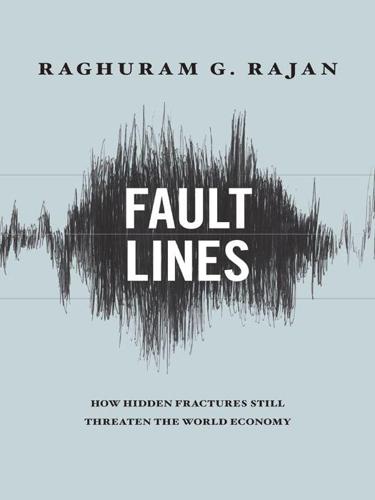
Fault Lines: How Hidden Fractures Still Threaten the World Economy
by
Raghuram Rajan
Published 24 May 2010
Put differently, small changes in the central bank interest rate can affect expectations about price growth considerably. The fact that asset prices are growing at double-digit rates does not mean that policy rates have to be raised commensurately. Second, bubbles develop based on a kind of “greater fool” theory—that even if an asset is already trading at an inflated price, someone will be willing to buy it at an even more inflated price. By signaling that it will tighten liquidity conditions, and thus constrain financing and trading, the central bank can signal to investors that there will be fewer fools out there with the capacity to buy, making it more difficult for the bubble to grow.
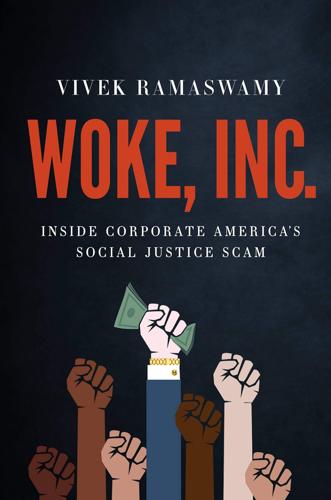
Woke, Inc: Inside Corporate America's Social Justice Scam
by
Vivek Ramaswamy
Published 16 Aug 2021
It’s reminiscent of the amount of money that piled into home loans as a result of mandates in the years leading up to the 2008 financial crisis. Good fundraising strategies don’t always make for good investment strategies. Asset prices may rise in the short run because there are more dollars chasing them due to the expectation they’ll keep rising. But that’s the logic of a Ponzi scheme. It’s what Burton Malkiel refers to as the “greater fool theory” in his book A Random Walk Down Wall Street. It’s a self-fulfilling prophecy: as long as there’s another buyer, the gravy train keeps running, yet it only lasts for so long. Who wins this game? Just like in 2008, the answer is large financial institutions. Mutual fund complexes like BlackRock make money based on the totality of assets that they manage, not based on the actual investment performance of those assets.
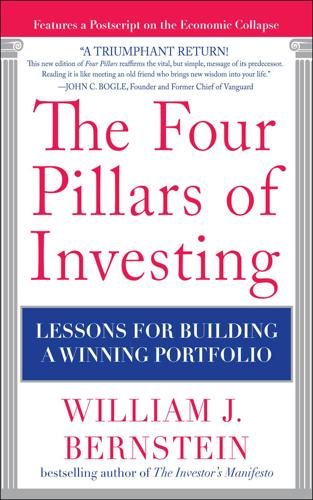
The Four Pillars of Investing: Lessons for Building a Winning Portfolio
by
William J. Bernstein
Published 26 Apr 2002
The DDM, by the way, is the ultimate answer to the age-old question of how to separate speculation from investment. The acquisition of a rare coin or fine painting for purely financial purposes is clearly a speculation: these assets produce no income, and your return is dependent on someone else paying yet a higher price for them later. (This is known as the “greater fool” theory of investing. When you purchase a rapidly appreciating asset with little intrinsic value, you are dependent on someone more foolish than you to take it off your hands at a higher price.) There is nothing wrong with purchasing any of these things for the future pleasure they may provide, of course, but this is not the same thing as a financial investment.
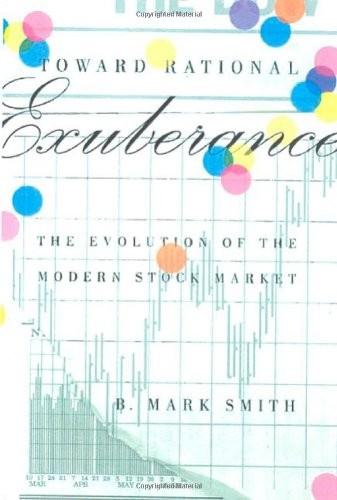
Toward Rational Exuberance: The Evolution of the Modern Stock Market
by
B. Mark Smith
Published 1 Jan 2001
But he relentlessly tried to purge his organization of all traces of emotion, insisting on cold, dispassionate analysis. Unlike Tsai and Alger, Carr did not concentrate his investments in high-flying glamour stocks. (He frequently said that performance managers who chased after high P/E growth stocks were operating on the basis of the “greater fool theory,” meaning that they paid too much for stocks on the dubious assumption that others would pay even more for them in the future.23) Carr preferred instead to seek out well-managed small firms that would be the growth stocks of the future. By 1968 he held positions in about 300 companies, most of them small.
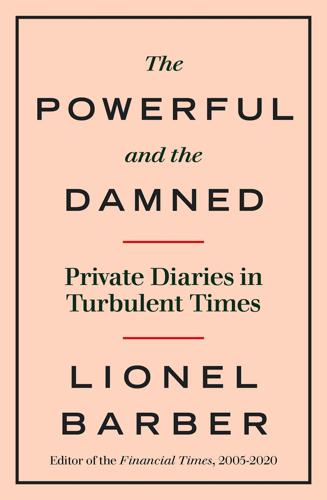
The Powerful and the Damned: Private Diaries in Turbulent Times
by
Lionel Barber
Published 5 Nov 2020
In Davos this year, at a lunch in a hotel room with walls covered with mink-like fur, Fuld promised he was going to ‘take some money off the table’. Rough translation: I’m going to be more responsible. Lehman has been a huge investor in real estate, betting that prices would continue to rise. They were then engaged in bigger, riskier trading games off this real-estate base. This is a new version of the Greater Fool Theory, which states that people can make money by buying securities, whether or not they are overvalued, by selling them for a profit at a later date. The gamble is that there will always be a bigger fool willing to pay a higher price. Fuld is no fool but he’s gotten greedy. Now he wants help from the Federal Reserve, through lower interest rates.
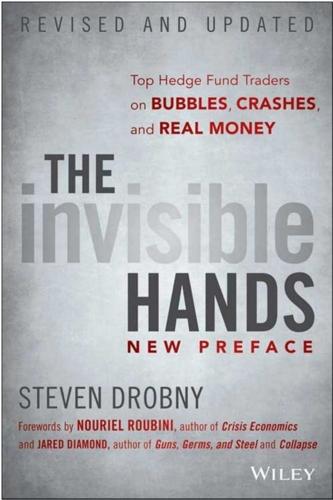
The Invisible Hands: Top Hedge Fund Traders on Bubbles, Crashes, and Real Money
by
Steven Drobny
Published 18 Mar 2010
If you do not have to worry about mark-to-market, you will be fine. You do not, however, want to fool yourself into thinking that you are liquid when in fact you are not. Many of the credit products offer ample opportunities for this type of delusion. If you are not going to hold these products until maturity, then you are essentially trading on the greater fool theory. At some point, you have to sell it to someone else. If you are planning to sell it during the bull market, then you will be fine—but most people do not, and collectively it is logically impossible. If you wait until it all starts rolling over, it’s too late. Once a market becomes illiquid, there is no bid and there is no way out.

More: The 10,000-Year Rise of the World Economy
by
Philip Coggan
Published 6 Feb 2020
There was a land boom in Florida, again financed on margin; investors could make a non-refundable down payment with the rest due in 30 days.39 Many speculators had no intention of paying the rest of the money. They hoped to sell their stake to someone else before the 30 days were up – the so-called “greater fool” theory. The bubble burst by 1926 and the fallout was largely local. But the lesson that easy credit often served to inflate asset prices would need to be learned again and again. The Soviet alternative Russia had entered the First World War to protect its Slavic ally, Serbia. Its potential power had so worried the Germans that they devised a plan to outflank the French forces and achieve a quick victory in the west, before turning back to the east.
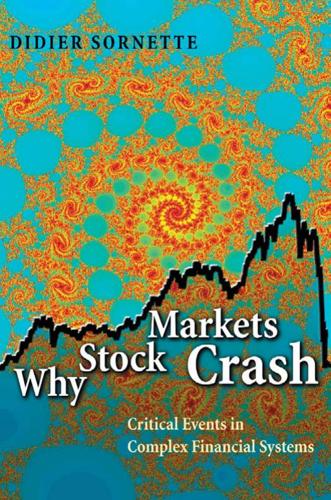
Why Stock Markets Crash: Critical Events in Complex Financial Systems
by
Didier Sornette
Published 18 Nov 2002
To make the argument even clearer, let us mention that this model can be mapped exactly onto a model of material failure according to a cascade of abrupt ruptures [355]. The acceleration of the number of traders buying the market in the inflating bubble captures the oft-quoted observation that bubbles are times when the “greater fool theory” applies. In financial circles, this refers to buyers of stocks buying confidently irrespective of the dividends or other underlying fundamental factors, expecting to sell to someone 186 chapter 6 else at an even higher price in some future. As an illustration, it has been reported [142] that Henry Ford was taking the elevator to his penthouse one day in 1929, and the operator said, “Mr.
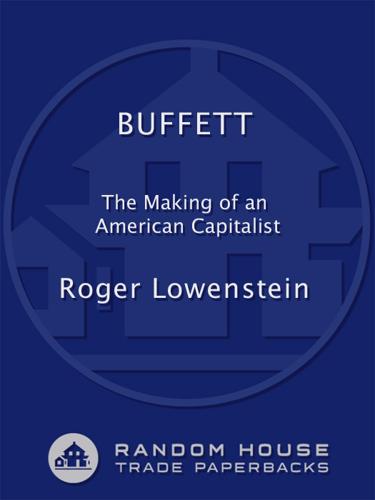
Buffett
by
Roger Lowenstein
Published 24 Jul 2013
Though interest rates had risen through most of 1987 (depressing intrinsic business values), the stock market had ignored them. By August, stock prices were at the historically unsustainable level of twenty-two times earnings. As each lunatic has his vision, each bull market has its rationale. In 1987, it was that excess “liquidity” would hold prices up. This was a version of the greater-fool theory: the cash (“liquidity”) of nameless others would save the day. Japanese stocks, then at sixty times earnings, were said to provide cover. No matter how absurd the prices at home, since Japanese stocks were more absurd, U.S. stocks were held to be safe. Of course, such rationales had not kept previous rallies from abrupt and unpleasant endings.
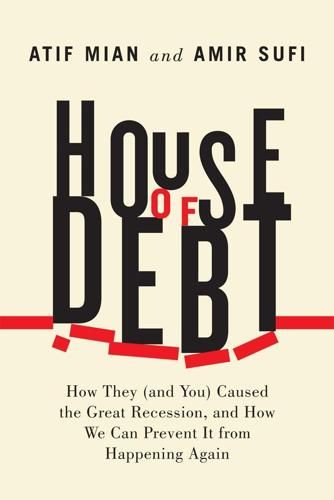
House of Debt: How They (And You) Caused the Great Recession, and How We Can Prevent It From Happening Again
by
Atif Mian
and
Amir Sufi
Published 11 May 2014
Logic dictates that a bubble can only exist if the buyers are “optimists” (a gentle word for those with “irrational exuberance”) or if the buyers believe there will be a “greater fool” to buy the asset in the future when prices are even higher.7 We can now start to build a theory of how debt stokes bubbles. John Geanakoplos has investigated how debt enhances the buying capacity of optimists, or those who are convinced that asset prices will continue to rise. By enhancing optimists’ buying power in the future, debt increases the probability that a greater fool will indeed be waiting tomorrow.8 Imagine a world with 100 identical houses for sale. Two types of people populate this world: optimists and pessimists.
…
However, if pessimists are right, then the increase in house prices will be temporary and sometime in the future the bubble will burst. In addition to facilitating bubbles, debt also helps sustain them—for a while at least—due to its impact on expectations. A relaxation in access to debt means that more optimists can enter today and in the future. This bolsters the belief that there will be a greater fool who will buy the asset at even higher prices. And the party gets even bigger. The expectation of a bubble growing even more entices speculators to enter the market in addition to optimists. Notice that there is an element of animal spirits in our explanation of the housing boom, even when debt plays an important role.
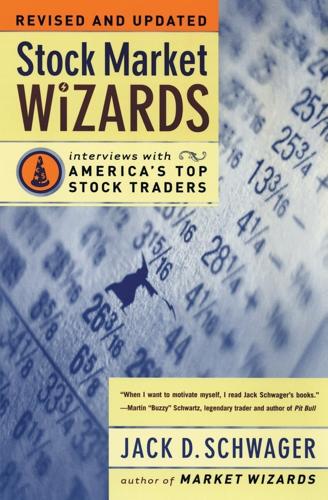
Stock Market Wizards: Interviews With America's Top Stock Traders
by
Jack D. Schwager
Published 1 Jan 2001
The same can be said of many of Magellan's peers. You could call this now prevalent investment style "turbo-indexing." If the strategy is working in terms of return, what is wrong with that? The problem is that their approach depends on the "greater fool" premise. [It's okay to buy a stock that is grossly overpriced, as long as you sell it to someone else—a greater fool—even higher.] This process always ends in tragedy for those left holding the bag, which in this case will likely be mutual fund investors. The theoretical case for indexing is actually quite persuasive. It allows the investor to own a representative piece of the market, with presumably lower risk due to the index's diversification.
…
It may become quite uncivil if they all run for the exits at the same time. So you're saying that many individual investors who believe they have placed their money into the most conservative stock funds are unwittingly holding high-risk investments. Absolutely. What started out as a conservative, passive investment strategy has metamorphosed into a "greater fool" investment pyramid. When this situation begins to unravel, the losses will be horrific. People talk in terms of a bear market being a 20 percent or 30 percent decline. I can make a case why a stock such as Microsoft—which is by far the largest component of the S&P 500, and not surprisingly the biggest holding in Magellan (and most other mutual funds)—could decline by as much as 80 or 90 percent.
…
Shaw Financial Products, 259 DESoFT, 259 diagnostic capability, 29 discounts, 140-41, 157,213,250-52,253,315 Columbia Pictures, 100 commissions, 48, 134, 148, 175, 203, 213, 214, Disney, 93-94 diversification, 33, 34, 51, 86-87, 93, 306, 319, 321 dividend capture strategy, 140-41 328 Commodities Corporation, 191 dividends, 13, 133, 140-41 dog races, 129-30 commodity markets, 199,231 commodity trading advisors (CTAs), 231 Commodore Computer, 13-14 Dow Jones Industrial Average, 47, 109 Compaq, 37 competition, 73, 145, 229 earnings: compilers, 258 Complete Guide to the Futures Market, A (Schwager), 327n compliance departments, 11 1—13 Comp USA, 90 computers: market for, 37-38, 39, 43-44, 86-88, 90, 139, 244, 269,279-80 parallel-processor, 258-63 research based on, 77, 81, 129-30, 157-58, 181, 194-95, 197, 202-3, 204, 208, 215, 255, 274, 319 software for, 26, 86-88, 90, 139, 215 see also Internet confirmation statements, 16 conjunction trades, 109 consolidates, 24M4 contingency plans, 184, 186, 187 Cook, Mark D., 95-126 background of, 95-97 fund managed by, 97 losses of, 101-7, 108, 122-24, 126, 314 as novice trader, 97-107 profits of, 96, 97-98, 101, 112-19, 125 strategy of, 97, 107-26, 299, 301, 303, 304, 305, 308,312,314,315,316,319 Cook, Martha, 104-5, 123-24 Dutch tulip craze, 64 fraud, 91-92 Friess Associates, 58-59, 67, 73 front-running, 79-80 futures, 144-45, 191-92, 199, 202-3 see also options Galante, Dana, 75-94 fund managed by, 76, 85-89, 93 losses of, 86-88 as novice trader, 76, 77-85 profits of, 75-76, 93-94 strategy of, 75-77, 81, 85-94, 311, 324 as woman, 77, 88-89 gambling, 90, 225-26, 255-56, 266-67 Gap, 12,67-68 Gatev, Evan G., 256»i expectations of, 15, 16, 40-41, 49, 61, 63, 86-88, 138-39, 141,215-17,279,286-87 loss of, 81,89-90, 92,94, 138-39, 215-17, 279 General Electric, 136, 137 General Motors, 145 Goetzmann, William N., 256n price vs., 21, 22, 43-44, 52, 58, 59, 60, 62, 65, 66, gold prices, 102, 231-32, 310 72-73, 79, 81, 89, 92, 94, 149, 152, 154-55, 158, 164, 165, 166-67, 172,216,306,320,321, 325 quarterly reports of, 40, 60, 62-63, 84, 138-39, 141,215-17,286-87 "earnings surprise," 216 Goldwyn, Samuel, 118 "greater fool" premise, 34, 36 Greenberg, Ace, 136, 138 163, 165,318 Institutional Investor All-Star analyst team, 32 150, 151, 162, 185, 186, 218, 229-30, 240, 249, 259, 262, 279-81, 310-11 inventory, 90, 92 Investing Championship, U.S., I l l , 118, 170 investment: diversification of, 33, 34, 51, 86-87, 93, 306, 319, 321 institutional, 192,318 long-term, 40, 42, 157, 164, 234-35 return on, 46, 55, 59, 75-76, 97, 170, 243 size of, 32-33, 52 speculation vs., 20, 84-85, 177, 225-26 sea also portfolios Investor's Business Daily, 152 Istanbul Stock Exchange, 148, 1 53-54, 156 January effect, 198-99 Janus 20, 39-40 Japan, 7-8,64,223,303,310 J, Crew, 10 J.
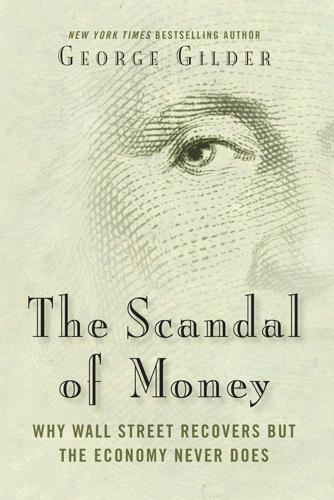
The Scandal of Money
by
George Gilder
Published 23 Feb 2016
Today’s “unicorn” valuations totaling hundreds of billions of dollars all took place without “going public.” Pre-public investors anticipate something like a sevenfold return in exchange for the risk and illiquidity of pre-IPO markets. Thus the unicorn valuations imply projected exits—“liquidity events” and greater-fool financings—seven times higher. If the public could be induced to buy these companies after the initial surge of their market cap, the anticipated harvest over the next few years would be a couple trillion dollars, most of it going to “qualified investors,” that is, the “rich.” The middle class would be holding the bag.
…
The world may prove treacherous even for instant virtual hooker drone delivery systems. Back in 1999, the exits opened out into capacious public markets through IPOs, then seven times more numerous than mergers and acquisitions (M&As) for tech companies. But today the rarities are IPOs, outnumbered by M&As twenty-two to one. Which means that the “greater fools” chiefly targeted by venture capitalists to buy their unicorns are not you and I and millions of others in a possibly hallucinogenic NASDAQ public market but rather a tiny elite of cagey bidders counseled by game theory quants. The oligopsonists include Facebook’s Mark Zuckerberg, Microsoft’s Satya Nadella, Google’s alphabetic Larry Page, Disney’s Robert Iger, Verizon’s Lowell McAdam, Amazon’s Jeff Bezos, Netflix’s Reed Hastings, and Apple’s Tim Cook.

Attack of the 50 Foot Blockchain: Bitcoin, Blockchain, Ethereum & Smart Contracts
by
David Gerard
Published 23 Jul 2017
Awareness phase: Some investors become confident, enthused by the rise. Mania phase: Popular buzz; media coverage. The public see these first investors and buy because others are buying, with the implicit assumption that there will always be Greater Fools to sell it on to. This is what makes a bubble: investing to sell to other investors. Someone will say that the old rules don’t apply any more. Blowoff phase: The old rules turn out to still apply. The bubble runs out of Greater Fools; prices collapse. The asset need not be a commodity, e.g., the Beanie Baby craze of the late 1990s, in which the asset was various instances of a manufactured product line controlled by a single company.
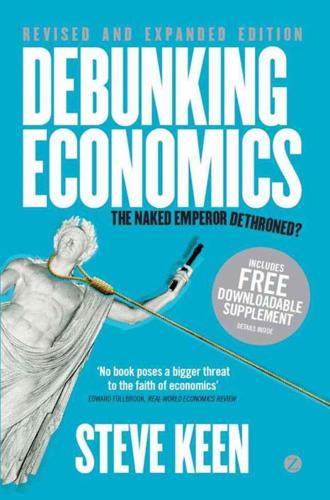
Debunking Economics - Revised, Expanded and Integrated Edition: The Naked Emperor Dethroned?
by
Steve Keen
Published 21 Sep 2011
Valuations are ostensibly based on the net present value of expected future dividend flows, but in reality based on the ‘Greater Fool’ principle, where rising debt funds the Greater Fool. Anticipated capital gain is the real basis of valuation, and the overwhelming source of that capital gain is not increased productivity, but increased leverage. This trading adds zip to the productive capacity of society, while promoting bubbles in stock prices as leverage drives up prices, encouraging more leverage, leading to a crash after price-to-earnings ratios reach levels even the Greater Fool regards as ridiculous. When the share market crashes, prices fall but the debt that drove prices up remains.
…
When the share market crashes, prices fall but the debt that drove prices up remains. If instead shares on the secondary market lasted only fifty years, then even the Greater Fool couldn’t be enticed to buy them with borrowed money – since their terminal value would be zero. Instead a buyer would purchase a share on the secondary market only in order to secure a flow of dividends for fifty years (or less). One of the two great sources of rising unproductive debt would be eliminated. This reform would dramatically tilt the balance in favor of the raising of capital via primary share issues, force valuations to be based on prospective earnings rather than capital gain, and make leveraged speculation on the value of shares on the secondary market much less attractive.
…
Galileo Galilei Game Theory Garicano, Luis Giffen goods Glass-Steagall Act, repeal of glut; alleged impossibility of Gödel’s proof Godley, Wynne gold standard; theory of Goodwin, Richard; growth cycle model Gordon, R. J. Gorman, William government spending, as stabilizer of economy Gramm, Phil Graziani, Augusto Great Depression; misunderstanding of Great Moderation Great Recession; combating of; misunderstanding of; neoclassical response to Greater Fool principle Greenspan, Alan growth theory; neoclassical Handbook of Mathematical Economics Harrison, Edward Harrod, R. Haugen, Robert Hayek, Friedrich von Hegel, G. W. F., Marx’s critique of Henon Map heterogeneity Hicks, John; ‘Mr Keynes and the Classics’ see also IS-LM model Hicksian compensated demand curve Hippases of Metapontum Hirst, David Holmes, Alan homothetic conditions Horizontalism households: convert goods into labor/capital; debt of housing bubble Hudson, Michael Humpty Dumpty hypotheses, assumptions of imperfections in model income effects income of capital independence indifference curves; elimination of individual behavior, theory of individual rational investor Inefficient Markets Hypothesis inertness of economics infinitesimal amounts, not zeros inflation; causes of; relation to unemployment inflationary universe, theory of innovation instability; of capitalism; of systems see also equilibrium, instability of and Minsky’s Financial Instability Hypothesis Institute for New Economic Thinking (INET) instrumentalism interest; medieval prohibition of; rates of (ceiling for; legal; setting of) interests, sum of international trade, theory of Internet; use of Internet Bubble investment; badly apportioned; cloud of possible investments; impact of expectations on investment counselling Investment Opportunity Curve (IOC) invisible hand Ireland, P.
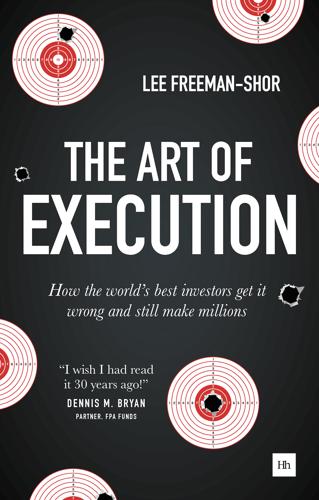
The Art of Execution: How the World's Best Investors Get It Wrong and Still Make Millions
by
Lee Freeman-Shor
Published 8 Sep 2015
Investors need to try to break the link between success and failure in prior investments if they want to succeed. Always remember: Selling a winner can seriously damage your wealth. 4. Winners can keep winning Many studies have shown that momentum investing can be a winning strategy. Stock leadership does seem to persist long enough to exploit it – a greater fool will (almost) always buy at a higher price. Research by Narasimhan Jegadeesh and Sheridan Titman in 1993 showed that stocks earning relatively high, or low, returns over a three-to-12-month time frame, continued that trend over the subsequent three to 12 months.49 In other words, winning stocks continued to win (they autocorrelate).
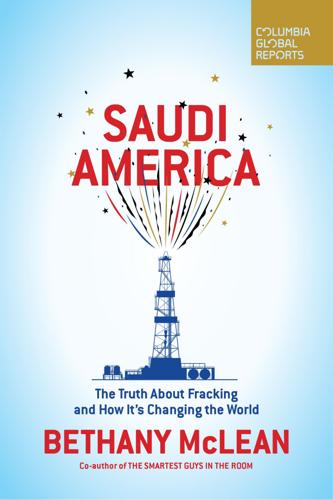
Saudi America: The Truth About Fracking and How It's Changing the World
by
Bethany McLean
Published 10 Sep 2018
For a long time, the value the public market was willing to accord a fracker was based not on a multiple of profits, which is a standard way of valuing a company, but rather as a multiple of the acreage a company owns. It was a bit like the old dotcom days, when internet companies were valued on the number of eyeballs. The attitude is invest-and-flip, not buy-and-hold. “I view it as a greater fool business model,” one private equity executive tells me. “But it’s one that has worked for a long time.” In the summer of 2017, finger-pointing began regarding who was to blame for the red ink in the shale business. True, investors who expect profits are disappointed in shale companies. Or as Doug Terreson, a one-time petroleum engineer turned top-ranked energy analyst, now with Evercore ISI, asks, “If shale is such a great business, why isn’t it creating value for shareholders?”

The Wisdom of Crowds
by
James Surowiecki
Published 1 Jan 2004
Camerer, who designed the experiment, asked them why they bought at prices they had to know were crazy: “They’d say, ‘Sure I knew that prices were way too high, but I saw other people buying and selling at high prices. I figured I could buy, collect a dividend or two, and then sell at the same price to some other idiot.’ ” In other words, everyone was convinced the greater fool was out there. The Caltech experiment is interesting because it’s so extreme. The students had all the information they needed to make the right decision—that is, not to overpay for the shares. They knew when the experiment would end, which meant there was a limited time for them to dump their shares.
…
That suggests something about the perils of dependent decision making. Having said that, real bubbles are more complicated and more interesting than the Caltech experiment suggests. In the first place, it’s not always obvious to the people inside a bubble that that’s where they are. Camerer’s students openly said that they were just looking for the greater fool. But in the midst of a real bubble, people—not all people, but certainly some people—start to believe the hype. People who bought shares of Cisco when the stock was the most expensive in the world undoubtedly did so because they believed that Cisco’s stock was just going to keep going up. But hidden inside that belief was the kernel of the idea that Cisco might really be worth $500 billion.
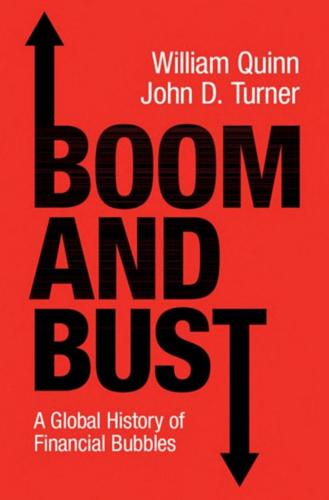
Boom and Bust: A Global History of Financial Bubbles
by
William Quinn
and
John D. Turner
Published 5 Aug 2020
Just as a fire produces its own heat once it starts, speculative investment is selfperpetuating: early speculators make large profits, attracting more speculative money, which in turn results in further price increases and higher returns to speculators. The amount of speculation required to start the process is only a small fraction of that which occurs at its peak. Once a bubble is under way, professional speculators may purchase an asset they know to be overpriced, planning to re-sell the asset to ‘a greater fool’ to make a capital gain.22 This practice is commonly referred to as ‘riding the bubble’.23 However, it is often difficult to distinguish investors who rode the bubble from those who were lucky enough to sell at the right time. Speculation is also much more widespread when many investors have limited exposure to downside risk.
…
Its financial columnist almost certainly held bicycle shares, which may have influenced his decision to repeatedly urge investors to hold shares in the expectation of a ‘reaction’ or ‘turn of the tide’ in the spring and summer of 1897.34 Promoters understood that even the most well-informed investor could be attracted by the prospect of making quick profits by re-selling them to a ‘greater fool’. Promotional materials made liberal use of stories in which small investors grew rich overnight as a result of their investments in cycle shares. The Beeston Tyre Rim Company, one of several doomed companies to emerge from the reconstruction of the original Beeston firm, opened its prospectus by selectively quoting a Financial Times article in which ‘a plunger who invested the lordly sum of 15s (£0.75) . . . has lately realised a profit of £345’.35 Such dramatic profits were extremely rare, but investors who managed to time their transactions well could make substantial gains.
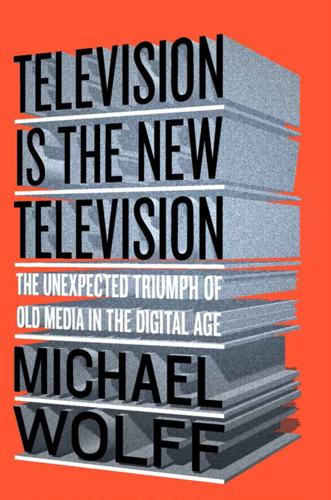
Television Is the New Television: The Unexpected Triumph of Old Media in the Digital Age
by
Michael Wolff
Published 22 Jun 2015
But somewhat confusingly, such automation turns out to require hundreds of people to perform. While Gawker is owned entirely by Denton and has been self-financing for most of its history, BuzzFeed has needed vast investment. While Denton has rebuffed all offers to buy his profitable business, BuzzFeed searches the market for a greater fool. Gawker, or the Gawker identity, Denton seemed to acknowledge in his memo, is a casualty in the race for traffic: Gawker succeeded because it was a carefully molded product (a small band of young people overseen by Denton—with Denton constantly hiring and firing his editors). But then it morphed into a business with a much larger number of ever-younger people having to produce more and more, and working with less and less editorial vision or leadership.

Elliot Allagash: A Novel
by
Simon Rich
Published 24 May 2010
Elliot didn’t seem to hear me. He dialed James. “Maybe this isn’t a good idea,” I said, finally. “I mean, it’s just class president. I don’t really care that much if I win.” Elliot slammed the phone down and stared at me. “If you think this is about something as petty as class president, you’re an even greater fool than I imagined! This is just a stepping stone—a stepping stone to a stepping stone to a stepping stone to a—” He stopped suddenly and forced an odd chuckle. “Look,” he said. “I couldn’t care less what you do. This is just a game to me.” He shrugged his shoulders. “You’re probably right. Who wants to be president?
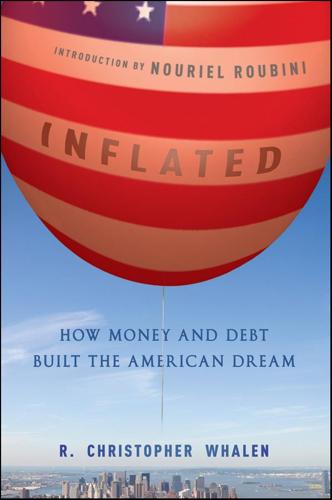
Inflated: How Money and Debt Built the American Dream
by
R. Christopher Whalen
Published 7 Dec 2010
In that sense, the libertarian political tradition of the United States has found economic expression in a decidedly casual and almost libertine view of money and debt.37 One perspective saw the American dream as a thing to be earned over many years of consistent work, saving, or cash investing, while the other depended mostly upon luck and avarice, the availability of new credit, or a greater fool to ensure gain or immediate gratification. The former is the cautious world of cash investing, Graham and Dodd, and deliberate choices made after careful consideration and analysis. The latter an aggressive, imaginative but speculative model of endless vistas and unconstrained vision, the common denominators of any mass movement, religious cult or financial get-rich-quick financial scheme.
…
Human nature, rather than economic laws or a carefully considered analysis of value, seems to have been the real impetus behind the remarkable ascent of the markets in the 1920s, but the finite supply of credit and a dwindling pool of market participants certainly drove the markets lower. As with a game of poker, the ability of players to raise the bid is limited to the number of chips on the table—a metaphor for the credit available to investors in a fundamentally speculative market. As the pool of available credit was exhausted and the number of “greater fools” who would buy securities at ever higher prices gradually diminished, the only direction that the markets could go was down. This adjustment was then exacerbated by the actions and inaction of the Fed and the White House under Herbert Hoover, neither of which seemed to understand fully the events that unfolded around them.
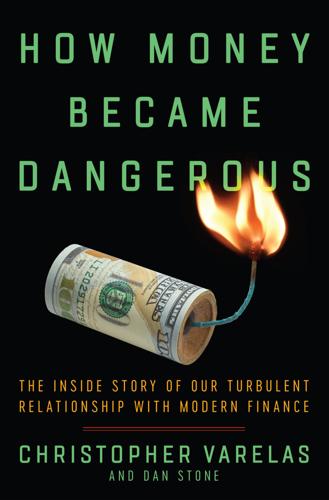
How Money Became Dangerous
by
Christopher Varelas
Published 15 Oct 2019
Andy was saddled with most of the fallout after the French realized that the full state of affairs hadn’t been revealed during negotiations, even though the French had full ability to scrutinize U.S. Filter’s projections during months of due diligence on the company. “Dick’s hubris got us to this point where it’s fourth down and fifty, and we had to complete a pass,” Andy later said. “And we ran into the greater fool at exactly the right time, and that’s what made the deal break. Let’s say that we didn’t find Vivendi. What would’ve happened? It would’ve been a disaster.” So Andy had a mess on his hands, but he did a great job running the company and quickly earned the respect of Vivendi’s senior management.
…
After his downfall, Messier quietly rebuilt his life. He now works as a business consultant. So why does one guy nail the timing, while another ends in bankruptcy or handcuffs? Is it chance? Is it talent? Is it pragmatism combined with foresight? Is there an instinct for when to throw in the towel? Was Messier really the greater fool, or was he just unlucky? While several events and missteps ultimately led to Messier’s ruin, Dick’s explanation is much simpler. Dick was friends with Richard Grasso, who ran the New York Stock Exchange, and Dick helped Messier get a seat on the NYSE board. Immediately after the terrorist attacks on September 11, 2001, the markets were plummeting, and Grasso was desperate to avoid an all-out panic.
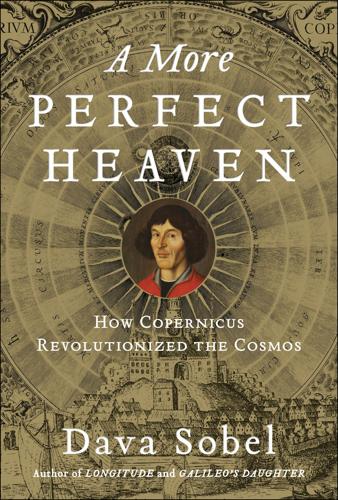
More Perfect Heaven: How Copernicus Revolutionised the Cosmos
by
Dava Sobel
Published 1 Sep 2011
“Therefore alongside the ancient hypotheses, which are no more probable, let us permit these new hypotheses also to become known, especially since they are admirable as well as simple and bring with them a huge treasure of very skillful observations. So far as hypotheses are concerned, let no one expect anything certain from astronomy, which cannot furnish it, lest he accept as the truth ideas conceived for another purpose, and depart from this study a greater fool than when he entered it. Farewell.” Although Copernicus himself had at last loosed his vision of “the composition of movements of the spheres of the world,” this anonymous preamble reduced his effort to the status of an interesting and worthy aid to calculation, wholly unrelated to reality. Chapter 9 The Basel Edition Anyone can rightly wonder how, from such absurd hypotheses of Copernicus, which conflict with universal agreement and reason, such an accurate calculation can be produced.

Retirementology: Rethinking the American Dream in a New Economy
by
Gregory Brandon Salsbury
Published 15 Mar 2010
Boom! The herding mentality reversed itself, and everyone sold shares, many for less than they’d paid because so many bought into the companies when they were heavily overvalued. The Dot Bomb was just one of many bubbles in the annals of human beings hoping they could sell what they had to the greater fool and secure riches for themselves. Tulips, of all things, were one of the great early sources of wealth and the creation of a bubble. In 1624, about 60 years after rulers of the Ottoman Empire were first enchanted by the vibrant colors that could only be found in tulips, a Dutchman in Amsterdam turned down a great deal of money for a single tulip bulb.
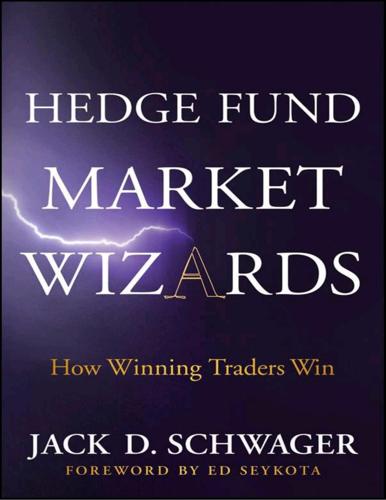
Hedge Fund Market Wizards
by
Jack D. Schwager
Published 24 Apr 2012
I think I am an exceptional trader, but sometimes I let my strong beliefs get in the way. I am working on letting go of my beliefs and be the trader I can be. But the beliefs get you on the right side of the market. The beliefs have always kept me making money and not playing the short-term moves that I don’t really trust. The markets are such a greater fool’s game. I don’t want to be the greater fool. There is clearly ego there. I understand why you may not want to play the momentum trade when it is contrary to your beliefs. But why not wait on the sidelines until you get the sense that the time is right? [Zach interjects.] Jimmy has this amazing execution. There are days when the market is up 5 or 10 handles and Jimmy may be $10 million short, and he will still finish up for the day.
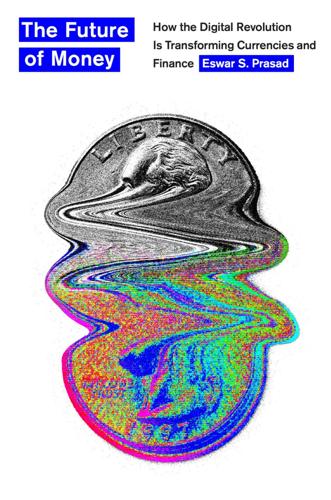
The Future of Money: How the Digital Revolution Is Transforming Currencies and Finance
by
Eswar S. Prasad
Published 27 Sep 2021
At a conference held in Scotland in March 2018, then Bank of England governor Mark Carney observed that “the prices of many cryptocurrencies have exhibited the classic hallmarks of bubbles including new paradigm justifications, broadening retail enthusiasm and extrapolative price expectations reliant in part on finding the greater fool.” The last phrase in his statement was an allusion to the period of seemingly ever-rising real estate prices during the US housing boom of the early to mid-2000s. High and rising real estate valuations seemed to be based on the notion that all it took to make money from a house purchased at inflated prices was to find just one buyer—an even greater fool than oneself—willing to pay an even higher price. Carney’s speech came on the heels of another by Agustín Carstens, head of the Bank for International Settlements; he described Bitcoin as “a combination of a bubble, a Ponzi scheme and an environmental disaster.”
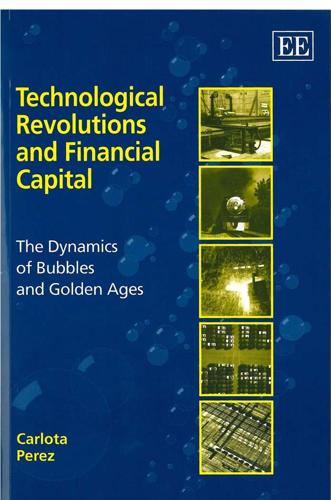
Technological Revolutions and Financial Capital: The Dynamics of Bubbles and Golden Ages
by
Carlota Pérez
Published 1 Jan 2002
In Tokyo, in the 1980s, real estate climbed to such absurd heights that the grounds of the Imperial Palace had the same nominal value as all the land in the state of California (or in all of Canada).137 In the Chicago of the late 1880s it was clear that prices had reached equally impossible levels, however the Chicago Tribune of the time explained the phenomenon saying that ‘people bought property at prices they knew perfectly well were fictitious … [being sure] that some still greater fool could be depended on to take the property off their hands and leave them with a profit’.138 As the various assets go up in price, confidence grows that they will continue to do so. Gradually the notion of ‘fundamentals’, so dear to the financiers at other times, is set aside and price/earnings ratios augment out of all proportions.
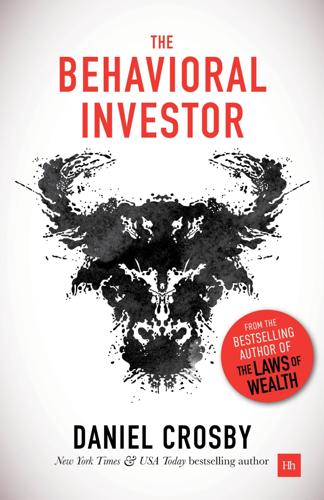
The Behavioral Investor
by
Daniel Crosby
Published 15 Feb 2018
“Experienced” traders (i.e., those who have played the game before) can learn to extinguish bubbles with repeated practice, but form the bubbles once again as soon as the valuation numbers change. The simulated market has been run allowing short selling, using different kinds of markets, with a variety of rules. In all conditions, bubbles occur. A Harvard study sought to replicate Smith’s work with one important departure: there was no ability to speculate and no “greater fool” to whom inflated assets could be passed on. Even in this kid-gloved simulation, you guessed it, bubbles and crashes occur. As this study reports, “the results suggest that the departures from fundamental values are not caused by the lack of common knowledge of rationality leading to speculation, but rather by behavior that itself exhibits elements of irrationality.”
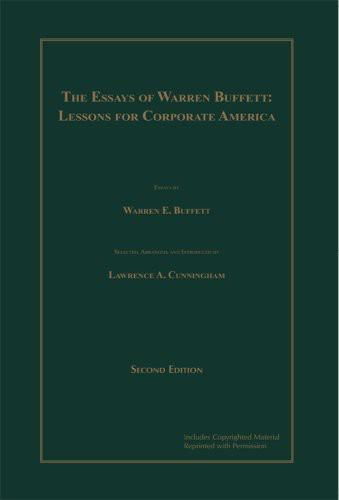
The Essays of Warren Buffett: Lessons for Corporate America
by
Warren E. Buffett
and
Lawrence A. Cunningham
Published 2 Jan 1997
Arbitrage positions are a substitute for short-term cash equivalents, and during part of the year we held relatively low levels of cash. In the rest of the year we had a fairly good-sized cash position and even so chose not to engage in arbitrage. The main reason was corporate transactions that made no economic sense to us; arbitraging such deals comes too close to playing the greater-fool game. (As Wall Streeter Ray DeVoe says: "Fools rush in where angels fear to trade.") We will engage in arbitrage from time to time-sometimes on a large scale-but only when we like the odds. C. Debunking Standard Dogma 18 The preceding discussion about arbitrage makes a small discussion of "efficient market theory" (EMT) also seem relevant.
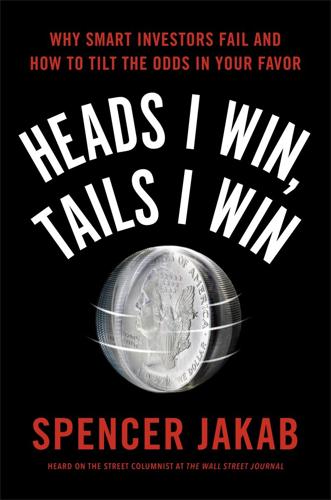
Heads I Win, Tails I Win
by
Spencer Jakab
Published 21 Jun 2016
Not a single respondent expected a negative return, but, even with dividends, they would lose a tenth of their money in the S&P 500 over the next decade.7 Hysteria, bubbles, and panics are part of investing, and I suspect they always will be. If someone could devise a perfect indicator to tell them when a bubble was near bursting or a crash near bottoming, he or she would be the greatest speculator of all time. There is no foolproof warning signal that will allow you to sell profitably to a greater fool or swoop in to pick up stocks at half price. But, as I hope I’ve shown, there are plenty of clues that the market has reached an emotional extreme. You need to remind yourself at such times that these are the forks in the road for investors. One direction leads to a happy place and the other to Lake Moneybegone.
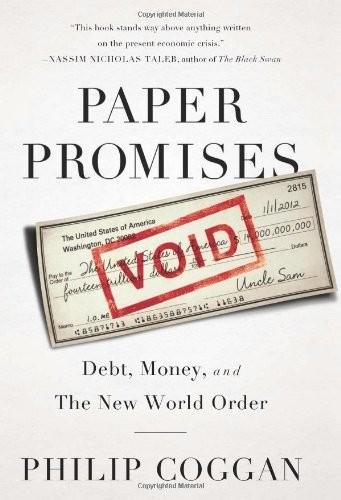
Paper Promises
by
Philip Coggan
Published 1 Dec 2011
(Bernie Madoff’s scheme lasted so long because he offered reliable, rather than outlandishly high, returns.) The outright frauds have no investment justification at all. But even pyramid markets based on a genuine social change (such as the creation of the Internet) are doomed to eventual failure. The Ponzi stage described by Minsky is often known as a ‘greater fool’ process. Buyers do not believe prices are justified but think they will find a gullible buyer willing to pay even more. They buy apartments sight unseen and purchase Internet stocks with no dividends or even revenues. Investors who take part in such bubbles will usually feel much more sophisticated than the naïve fools who fall for pyramid schemes, but they are making a similar mistake.
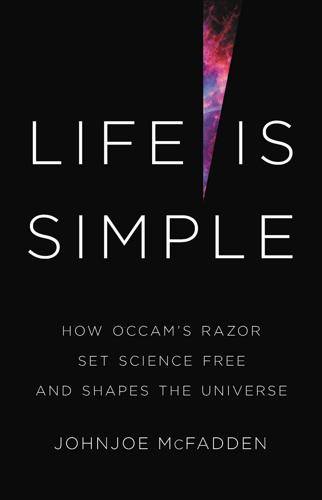
Life Is Simple: How Occam's Razor Set Science Free and Shapes the Universe
by
Johnjoe McFadden
Published 27 Sep 2021
In other words, Copernicus’s thesis was just another example of ‘sky geometry’, with no more claim on reality than Ptolemy’s epicycles. He concludes with the assessment that ‘So far as hypotheses are concerned, let no one expect anything certain from astronomy, which cannot furnish it, lest he accept as truth ideas conceived for another purpose, and depart from this study a greater fool than when he entered it. Farewell.’ A copy of the first print run of the book was rushed to Canon Copernicus’s bedside. He died the same day of 24 May 1543, his death, it is said, hastened on reading the infamous preface. For many years its author remained unknown. It was Johannes Kepler who later uncovered the truth that it had been written by Andreas Osiander.
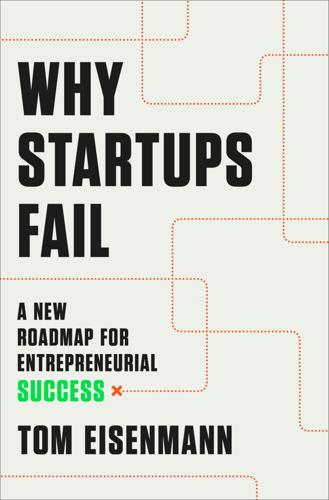
Why Startups Fail: A New Roadmap for Entrepreneurial Success
by
Tom Eisenmann
Published 29 Mar 2021
That’s unlikely in the case of online home goods: It’s uncommon—but not unheard of—to reach $100 million in sales and not have someone on staff who can scrutinize cohort performance and trends in CAC. Second, they may know that their marketing spending is excessive but, due to overconfidence and wishful thinking, they assume that better outcomes are just around the corner. The third reason for overinvesting in growth is more sinister: the hope that a greater fool will pick up the tab. If an entrepreneur knows that her sector is locked into land grab logic, and, despite this, investors still overvalue her company, she may perceive an opportunity to exploit a speculative bubble. She can sell equity at high prices to naïve new investors who, notwithstanding the sector’s mounting losses, are captivated by its explosive revenue growth.
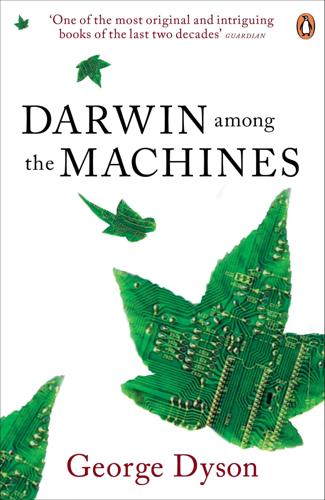
Darwin Among the Machines
by
George Dyson
Published 28 Mar 2012
“We are intelligent, and no intelligence so different from our own as to baffle our powers of comprehension deserves to be called intelligence at all. The more a thing resembles ourselves, the more it thinks as we do—and thus by implication tells us that we are right, the more intelligent we think it; and the less it thinks as we do, the greater fool it must be; if a substance does not succeed in making it clear that it understands our business, we conclude that it cannot have any business of its own.”36 As Darwinism was perceived as iconoclasm by the church, so any attempt to attribute intelligence to evolutionary processes is viewed with suspicion by those of orthodox Darwinian faith.

Age of Discovery: Navigating the Risks and Rewards of Our New Renaissance
by
Ian Goldin
and
Chris Kutarna
Published 23 May 2016
As the publisher’s preface to many copies of Copernicus’s On the Revolutions anxiously acknowledged, “[T]hese hypotheses need not be true nor even probable . . . they are not put forward to convince anyone that they are true, but merely to provide a reliable basis for computation . . . [L]et no one expect anything certain from astronomy, which cannot furnish it, lest he accept as the truth ideas conceived for another purpose, and depart from this study a greater fool than when he entered it.”33 Even Gutenberg’s press, so obviously an improvement over handwriting, was met with many shrugs at first. For making just a few copies of any book, a scribe was faster, far cheaper and less risky. The up-front investment Gutenberg needed to cast and arrange thousands of metal letters was considerable.
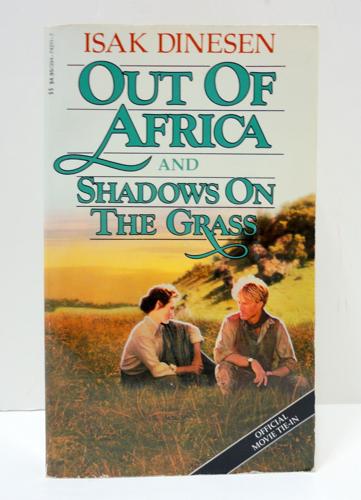
Out of Africa
by
Karen Blixen
Published 1 Jan 1937
A number of times, many years after our first meeting, he went out of his way to do me a service for which I had not asked him, and when I questioned him why he had done it, he said that if it had not been for me he should have been dead a long time ago. He showed his gratitude in another manner as well, in a particular kind of benevolent, helpful, or perhaps the right word is, forebearing, attitude towards me. It may be that he kept in mind that he and I were of the same religion. In a world of fools, I was, I think, to him one of the greater fools. From the day when he came into my service and attached his fate to mine, I felt his watchful penetrating eyes on me, and my whole modus vivendi subject to clear unbiased criticism; I believe that from the beginning, he looked upon the trouble that I had taken to get him cured as upon a piece of hopeless eccentricity.

The Black Box Society: The Secret Algorithms That Control Money and Information
by
Frank Pasquale
Published 17 Nov 2014
Gretchen Morgenson and Joshua Rosner, Reckless Endangerment: How Outsized Ambition, Greed, and Corruption Created the Worst Financial Crisis of Our Time (New York: Times Books, 2011); Bethany McLean and Joe Nocera, All the Devils Are Here: The Hidden History of the Financial Crisis (New York: 274 NOTES TO PAGES 124–127 Portfolio Books, 2010). This willful obliviousness to risk was compounded by the “greater fool” logic of the daisy chain transactions documented by Eisinger and Drucker: even if credit risk were to clearly manifest, holders of CDOs assumed there’d always be someone else willing to take on the risk. Jake Bernstein and Jesse Eisinger, “Banks’ Self-Dealing Super- Charged Finanical Crisis,” Pro Publica, August 26, 2010, at http://www.propublica.org /article /banks-self-dealing-super-charged-fi nancial-crisis. 104.
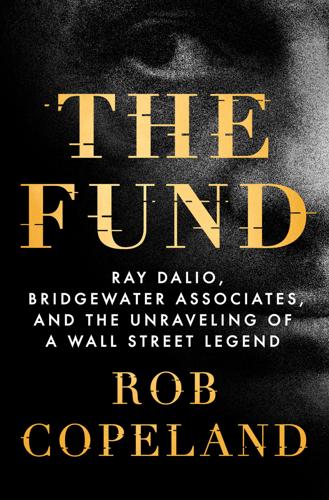
The Fund: Ray Dalio, Bridgewater Associates, and the Unraveling of a Wall Street Legend
by
Rob Copeland
Published 7 Nov 2023
“I don’t think of them as warning signs,” Dalio said. He called it “a little hiccup related to the subprime-lending problems.” He still believed investors, particularly from China, would continue to bid asset prices up and keep the market humming. He was riffing on a Wall Street adage, that there were greater fools out there, ever willing to buy someone out at a higher price. The interviewer asked, “Do you see any risk of a U.S. recession?” “No, not now. There is plenty of money washing around.” Dalio continued, “Everybody is flush with liquidity and it would be shocking to me if this little subprime problem essentially spread and sank the economy.”
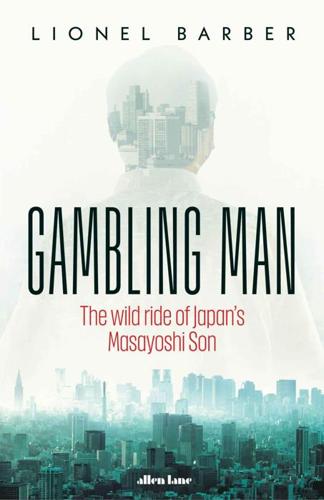
Gambling Man
by
Lionel Barber
Published 3 Oct 2024
Morgan Stanley was courting investment banking business so aggressively that few could recall a Meeker ‘sell’ recommendation; but she still had a point. What counted was not so much direction but timing: when to buy and when to sell – a big test for a techno-optimist like Masa. As the dot-com bubble inflated, the risks of being caught holding a vastly overvalued asset grew ever higher. It all depended on finding ‘a greater fool’ as a buyer, and Masa at times risked looking like the greatest fool on the block. In late 1995, around the time Masa was sizing up his investment in Yahoo!, SoftBank opened a makeshift investment office in San Jose, California. At that time, the stock-market vibes were very different. Venture capital wasn’t a household name and the importance of the internet was not immediately obvious.2 Masa’s first move was to lure Gary Rieschel to join his US scouting operation, followed by Brad Feld, an MIT-trained angel investor.
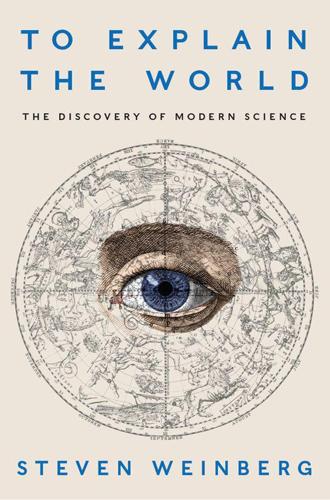
To Explain the World: The Discovery of Modern Science
by
Steven Weinberg
Published 17 Feb 2015
Since he cannot in any way attain to the true cause, he will adopt whatever suppositions enable the motions to be computed correctly from the principles of geometry for the future as well as for the past. Osiander’s preface concludes: So far as hypotheses are concerned, let no one expect anything certain from astronomy, which cannot furnish it, lest he accept as the truth ideas conceived for another purpose, and depart from this study a greater fool than when he entered it. This was in line with the views of Geminus around 70 BC (quoted here in Chapter 8), but it was quite contrary to the evident intention of Copernicus, in both the Commentariolus and De Revolutionibus, to describe the actual constitution of what is now called the solar system.
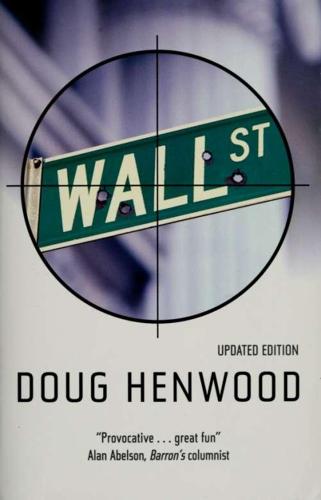
Wall Street: How It Works And for Whom
by
Doug Henwood
Published 30 Aug 1998
In a recession, speculators assume that other players will be or at least feel less flush, making the prospects for unloading an asset —whether it be a Rothko or 1,000 shares of Microsoft — at a higher price less friendly. Words of caution are in order here too; no one knows for sure when a recession will hit, so speculators may bet that there will always be some "greater fool" to take a rare baseball card off their hands, or that things are different this time and higher rates won't bring about a recession. These are some of the reasons why interest rates have such a profound impact on the prices of stocks and other speculative financial assets. Since many of the same techniques used to value stocks are applied to real-world assets as well — like an ongoing business that may be up for sale, or the willingness of a firm to undertake a new project or expand an existing one — rates are a powerful influence on real activity as well.
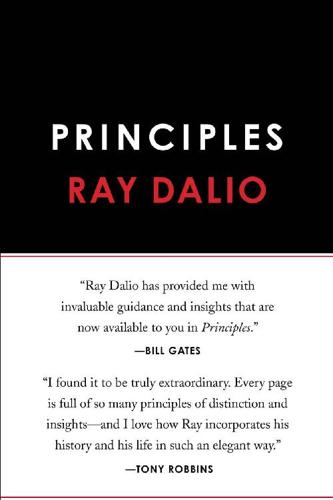
Principles: Life and Work
by
Ray Dalio
Published 18 Sep 2017
If I make any money from those trips, that’s just icing on the cake. MODELING MARKETS AS MACHINES I was really getting my head into the livestock, meat, grain, and oilseed markets. I loved them because they were concrete and less subject than stocks to distorted perceptions of value. While stocks could stay too high or too low because “greater fools” kept buying or selling them, livestock ended up on the meat counter where it would be priced based on what consumers were willing to pay. I could visualize the processes that led to those sales and see the relationships underlying them. Since livestock eat grain (mostly corn) and soymeal, and since corn and soybeans compete for acreage, those markets are closely related.

The Shifts and the Shocks: What We've Learned--And Have Still to Learn--From the Financial Crisis
by
Martin Wolf
Published 24 Nov 2015
When new buyers can no longer borrow, prices stop rising. From ceasing to rise to starting to fall takes but a moment: nobody wants to hold assets that nobody wants to buy. This is the ‘Minsky moment’, a term coined by Paul McCulley, formerly of the Pacific Investment Management Company (PIMCO). Once the supply of ‘greater fools’ has dried up, those who have borrowed in the expectation of further price rises will be forced to sell, the institutions who have financed them will to try to get their money back, and those who have lent to such institutions will also want their money back. That triggers the panic, the systemic crisis and the recession.
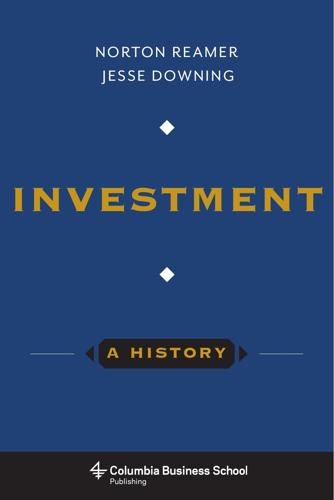
Investment: A History
by
Norton Reamer
and
Jesse Downing
Published 19 Feb 2016
On the other hand, if an investor purchases a security at a The Investment Challenge 5 greater price than its fundamental value, as described earlier, he or she is more likely to face a loss, unless the security is sold to another party willing to speculate on the swings of the markets (that is, the “greater fool”). As such, prudent investors often depend on estimates of investment value when making decisions regarding their transactions in the financial markets. Value provides an indispensable guide in terms of buying and selling.3 There have been countless examples of a failure to consider fundamental value in investing over the centuries.
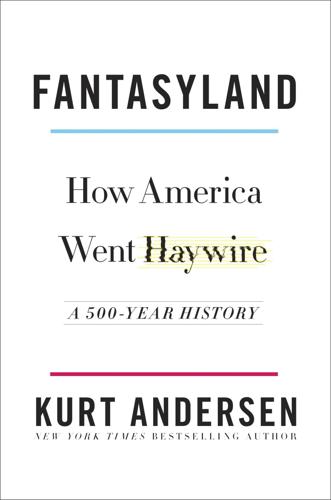
Fantasyland: How America Went Haywire: A 500-Year History
by
Kurt Andersen
Published 4 Sep 2017
When their faith in the financialized magic ended in 2008, they promptly chucked those wishful beliefs, of course, and defaulted to pure, reality-based Cynicism. What ended that period of extreme financial make-believe? It wasn’t grown-ups in charge stepping up and announcing it was crazy and doomed, that enough was enough. Rather, we finally ran through the supply of greater fools willing to pay a premium for the houses and other things the last group of fools had just bought. When America and the rest of the world were spanked by reality’s invisible hand, we got the meltdown and crash and Great Recession, the inevitable results of Fantasyland economics. In 2009, I sincerely argued that our national near-death experience, in which we glimpsed the economic abyss, could sober us up and put us back on the reality-based straighter and narrower—a national reset!

Mr Five Per Cent: The Many Lives of Calouste Gulbenkian, the World's Richest Man
by
Jonathan Conlin
Published 3 Jan 2019
‘Yet’, as she reflected in a poem written many years later, ‘I loved him just the same.’8 In 1921, when Nubar’s infatuation for Herminia had been at its most feverish, Rita had agreed to get out of bed and listen (for five shillings an hour) as Nubar gave vent to his feelings ‘with Herminia’s photograph in front and your revolver to the left’. Recalling this episode in 1935, in the midst of her own crisis, Rita emphasised their sibling bond. ‘Comparisons are odious – whether you or I have been the greater fool – we must not judge – we must believe in each other or not – I believe in you absolutely – you might return the compliment.’9 In the 1920s Rita seems to have found family life in the house at 38 Hyde Park Gardens satisfying enough. Gulbenkian made the house over to her and Kevork. But when Calouste had them join him in Paris in 1930 things seemed to fall apart.
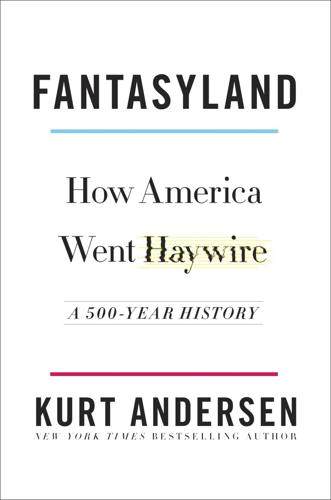
Fantasyland
by
Kurt Andersen
Published 5 Sep 2017
When their faith in the financialized magic ended in 2008, they promptly chucked those wishful beliefs, of course, and defaulted to pure, reality-based Cynicism. What ended that period of extreme financial make-believe? It wasn’t grown-ups in charge stepping up and announcing it was crazy and doomed, that enough was enough. Rather, we finally ran through the supply of greater fools willing to pay a premium for the houses and other things the last group of fools had just bought. When America and the rest of the world were spanked by reality’s invisible hand, we got the meltdown and crash and Great Recession, the inevitable results of Fantasyland economics. In 2009, I sincerely argued that our national near-death experience, in which we glimpsed the economic abyss, could sober us up and put us back on the reality-based straighter and narrower—a national reset!
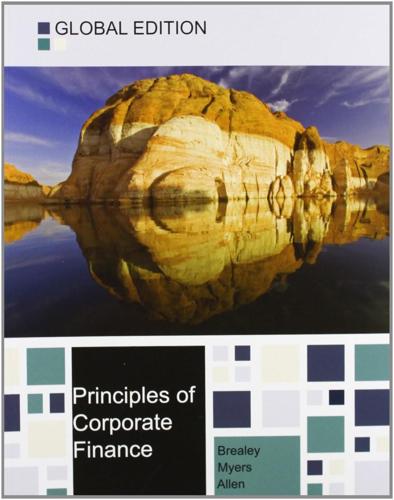
Principles of Corporate Finance
by
Richard A. Brealey
,
Stewart C. Myers
and
Franklin Allen
Published 15 Feb 2014
Investors refer to such occasions as bubbles. Bubbles can result when prices rise rapidly, and more and more investors join the game on the assumption that prices will continue to rise. These bubbles can be self-sustaining for a while. It can be rational to jump on the bandwagon as long as you are sure that there will be greater fools that you can sell out to. But remember that lots of money will be lost, perhaps by you, when the bubble bursts.16 The Japanese bubble is a good example. The Nikkei 225 Index rose about 300% between the start of 1985 and December 1989. After a sharp increase in interest rates at the beginning of 1990, stock prices began to fall.
…
Did the investors who bought the warrants at 8.15 yuan mistakenly believe that they were getting an option to buy WuLiangYe stock for 5.63 yuan? Perhaps wise investors, who were unable to sell the warrants short, decided instead to join the bandwagon by buying the warrants to resell them later to a greater fool at an even higher price. If so, the Chinese put–warrant episode is another example of the bubbles that we discussed in Chapter 13. Source: Wei Xiong and Jialin Yu, “The Chinese Warrants Bubble,” American Economic Review, 101(6): 2723–2753. 21-5 Option Values at a Glance So far our discussion of option values has assumed that investors hold the option until maturity.

Presidents of War
by
Michael Beschloss
Published 8 Oct 2018
They insisted on staying at the Capital’s finest inn until the “ruin and dirt” of the Erskines’ former residence was removed; Jackson muttered that he was not surprised to find poor housekeeping in an abode occupied by an American woman and a Scot. When the new Minister read Erskine’s letters and dispatches, he scoffed at the “mass of folly and stupidity,” concluding that his predecessor was “really a greater fool” than he had imagined: How could Erskine have tolerated listening to Madison speak, when “every third word was a declaration of war”? Invited for dinner at the White House in October 1809, Jackson and his wife alighted in an elegant barouche landau, which, he was certain, “astonishes the natives.”